#i have no idea how to tag this help
Text
i got this new anime plot. basically there's this hermitcraft builder except he’s got huge boobs. i mean some serious honkers. a real set of badonkers. packin some dobonhonkeros. massive dohoonkabhankoloos. big ol' tonhongerekoogers. what happens next?! a hermitcraft redstoner shows up with even bigger bonkhonagahoogs. humongous hungolomghononoloughongous
2K notes
·
View notes
Text

hello! im posting my first poem here, i hope everyone likes it!💗
for more context, this was inspired about when a friend told me jeonghan's long hair would probably tickle your face when he kisses you. i thought it was a cute little detail and decided to write a poem about it and how it feels so be loved by him but also how it feels to love him. i will post more poems through the week and surely write more in the future too so stay tuned for that!
if you're really curious about my other poems, they're all posted on my instagram!
thank you for reading, i hope to see you around💗
#sammy's works#sammy's poems#poems#short poem#poetry#poets on tumblr#poetsandwriters#poetscommunity#seventeen inspired#i have no idea how to tag this help
15 notes
·
View notes
Text

On autonomy, and what it means to be Obliged to Help.
Bonus:

#a homestuck walks into an antechamber and asks#hey is anybody going to make this dynamic wholly deterministic and thus dubiously consensual by its very nature#ANYWAY bigger ramble below. scroll down like usual#isat spoilers#isat#isat fanart#isat siffrin#isat loop#sifloop#THATS RIGHT WE'RE STILL SHIP TAGGING IT BABYYYY#in stars and time#in stars and time fanart#lucabyteart#RAMBLE START: anyway i think loop is wrong here. they have it backwards. as-- in my opinion--#the main reason they could be called back into existence postcanon is because *their* wish for help is still not complete#they still need help. siffrin still needs help. neither of them will ever stop needing help.#they will thus uphold the wish until the end of siffrin's natural lifespan.#that said. what does it mean that loop can be so wholly forced to abide by siffrin's wants?#(assuming the dagger cutscene posession is them being forced to uphold the 'help siffrin' wish via harsh universe logic)#[as opposed to something capricious and cruel the change god did. which feels out of character for the change god to me?]#much like how the island wish and duplicate objects are neutered by simply sliding off people's brains...#is loop subtly ushered toward their wish? obviously it's not a full override (see: the bossfight). but is there any interference?#and if so. so what? does it matter? if they don't notice? is it even real if they don't notice?#and even if they do notice. the universe leads we follow. how much do either of them value their free will in a belief system like that?#the whole game is dedicated to siffrin habitually NOT excersizing his free will. doing things the same Every Time.#Loop ESPECIALLY does this. predetermined predetermined predetermined even in the FACE OF CHANGE. REFUSING. ANY CHOICE.#Maybe they'd even be comforted by having a universe-ordained purpose even if it is subservient. even if its to Him.#(though. i can't see siffrin enjoying the idea that someone is subservient TO them... then all their suffering is his fault...)#loop got into this mess via WANTING too much. no more free will. can't be trusted with it. take it away from them.#but yeah. gets my greasy detective pony hands all over this. and everyone please do remember i like to make characters Outright Wrong A Lot
1K notes
·
View notes
Note
okay but like. I just had the weirdest thought about that ‘don’t look I’m naked’ comic. Which is that that’s essentially the same thing Adam and Eve did after they ate the fruit of knowledge of good&evil. So I feel like the theological implications of that could kneecap Gabe if he doesn’t think V1 is a being with free will.
yeah ok. i dunno man. is this anything
((side note. this isn’t necessarily meant to be in-character or story-accurate or take place at any particular point in time, just a way to explore some Thoughts. i was also imagining more that V1’s words aren't actually spoken, more like Gabriel’s more articulate interpretation of whatever garbled mechanical noise V1 is using to communicate. I think an angel could do that.))


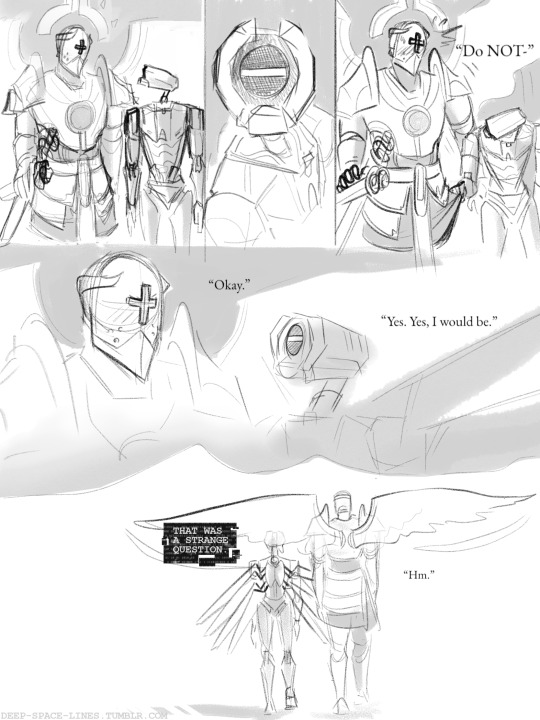

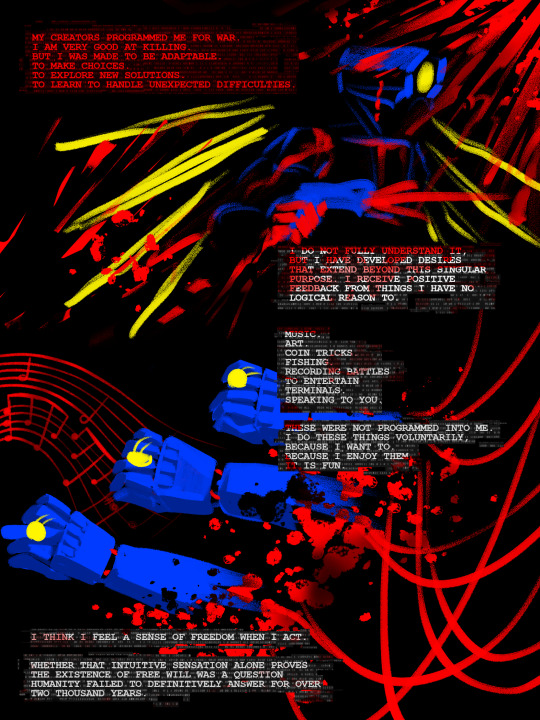
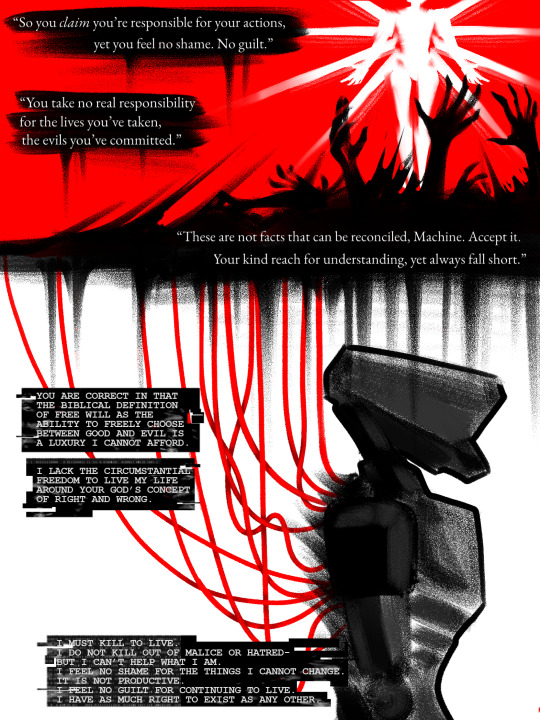
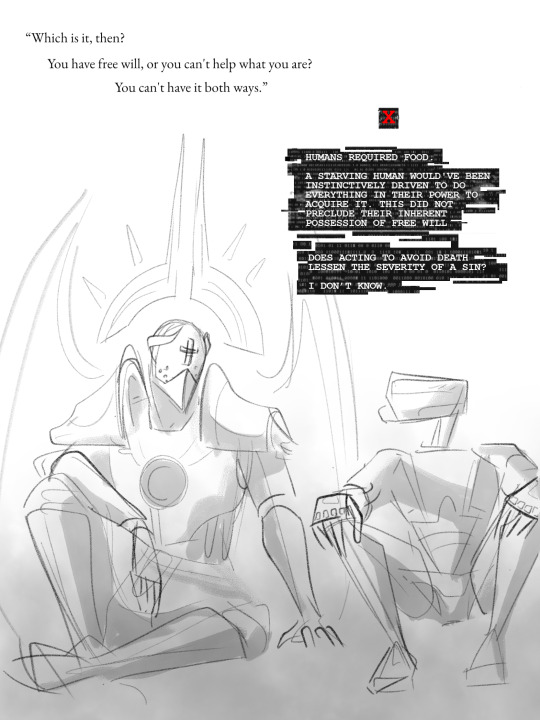
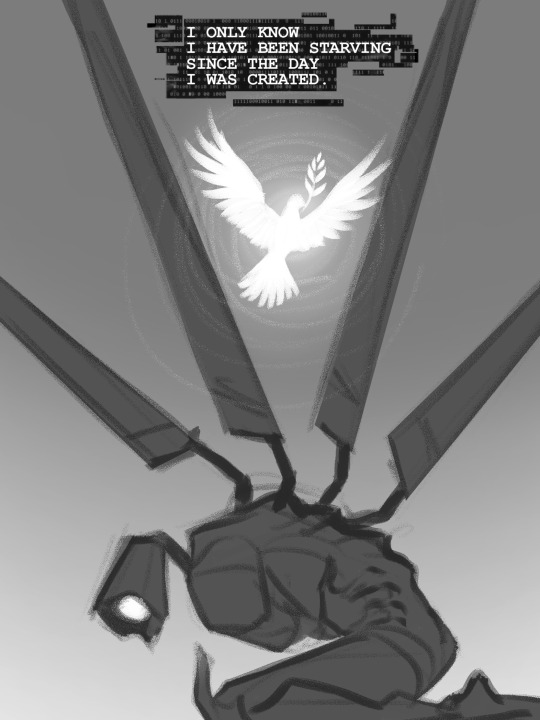

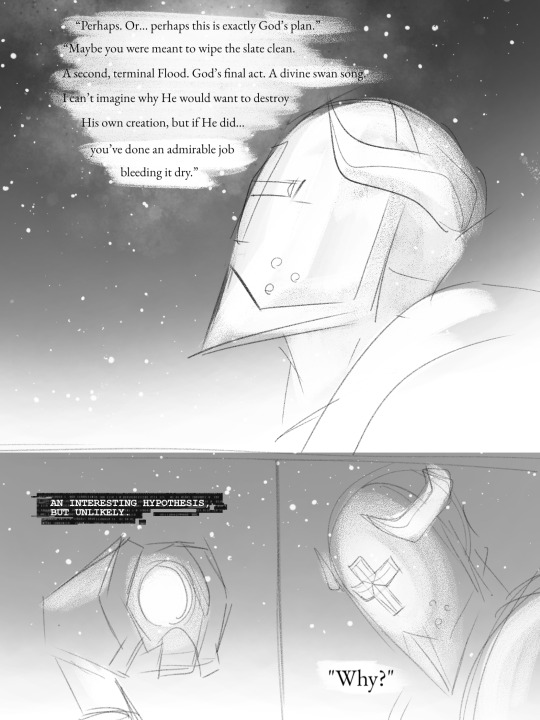

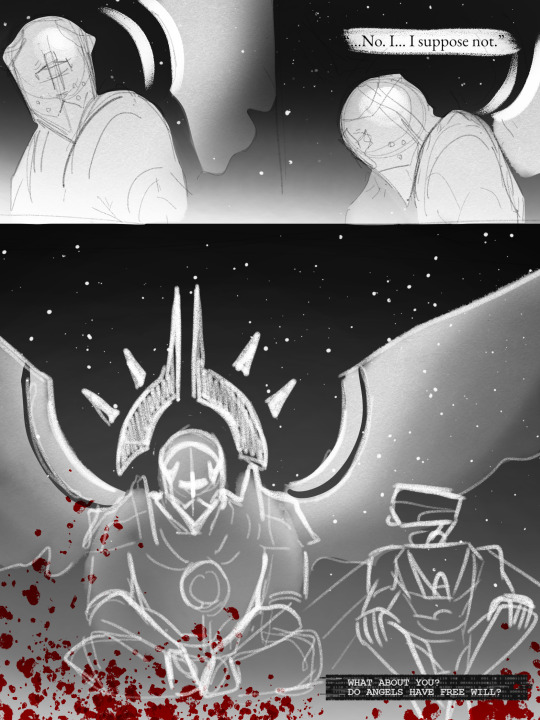
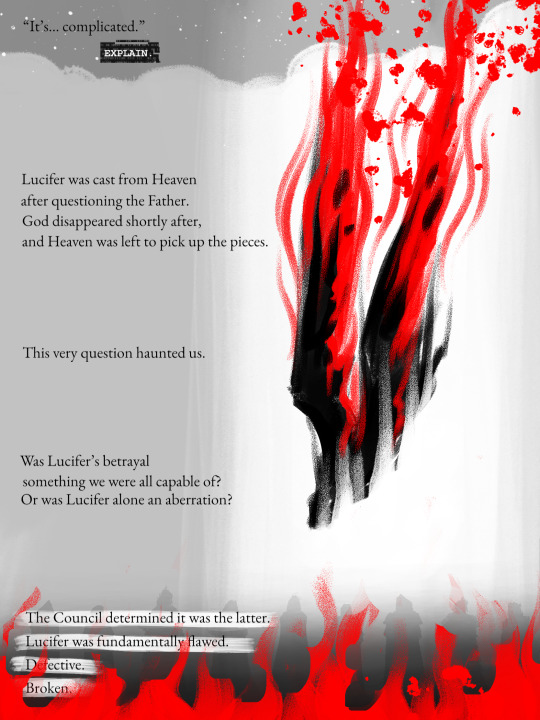

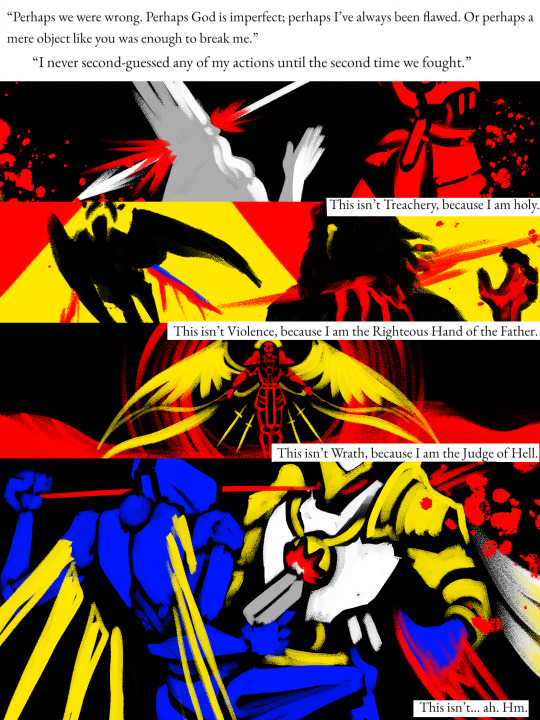

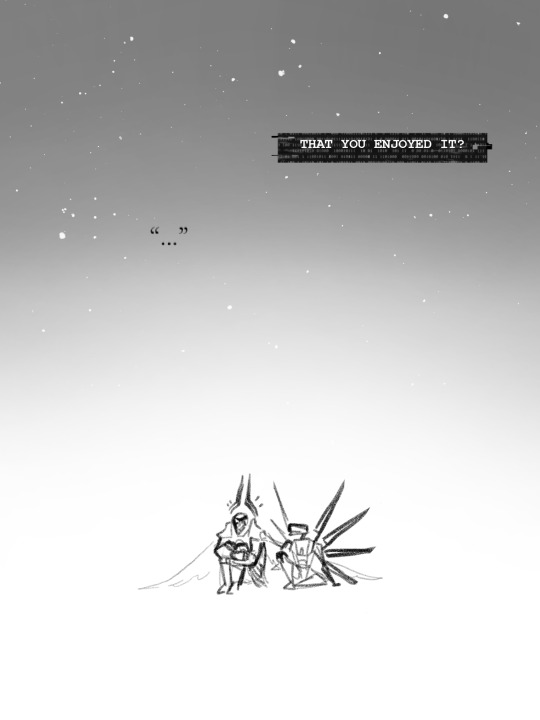
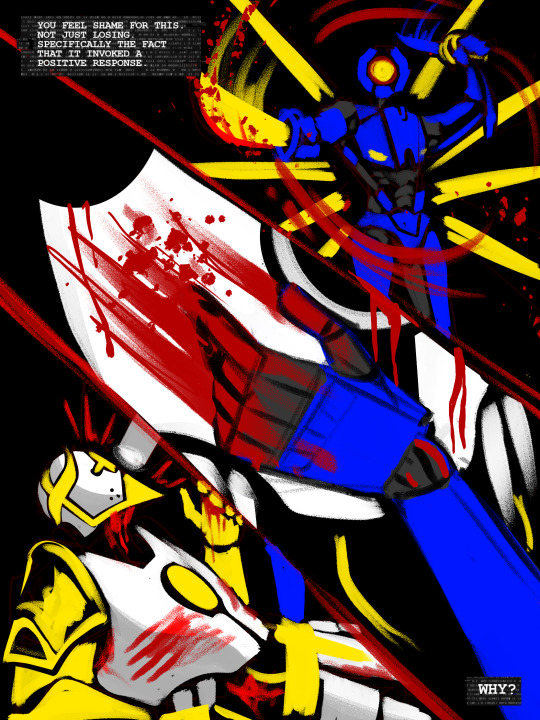

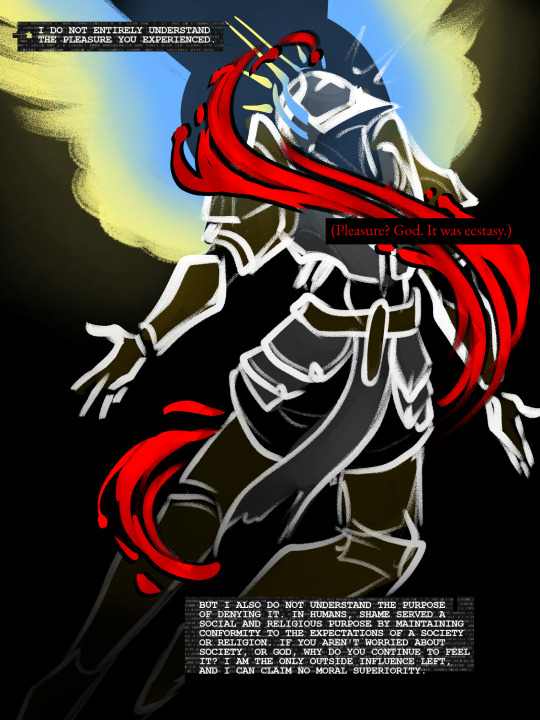


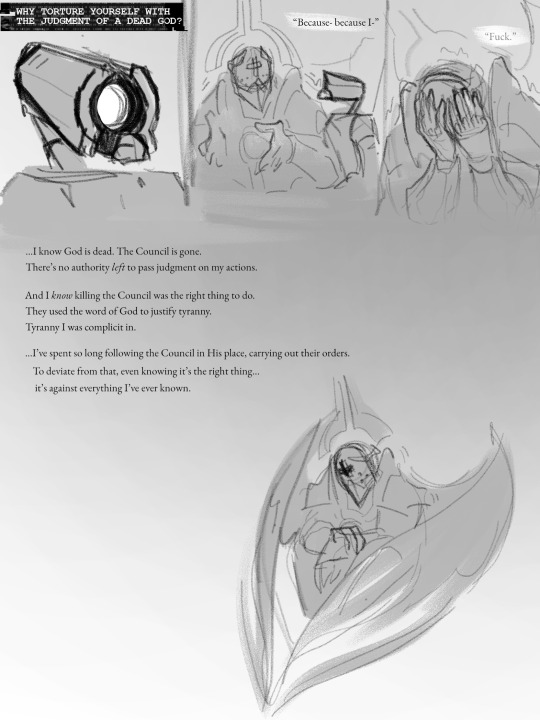


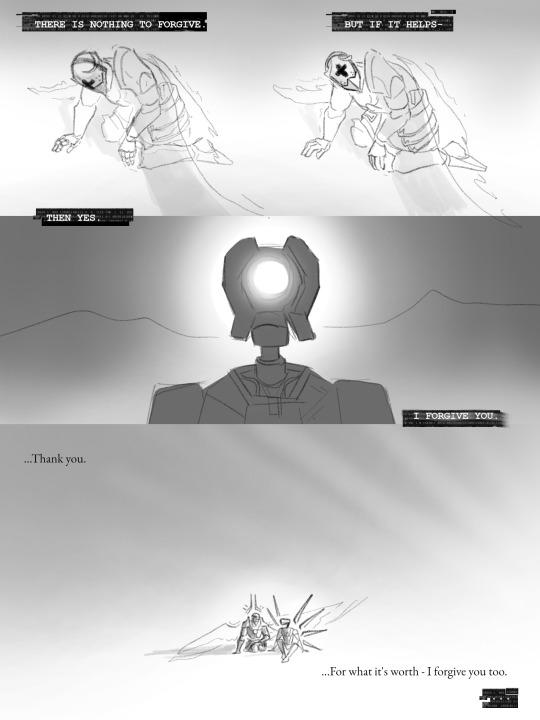


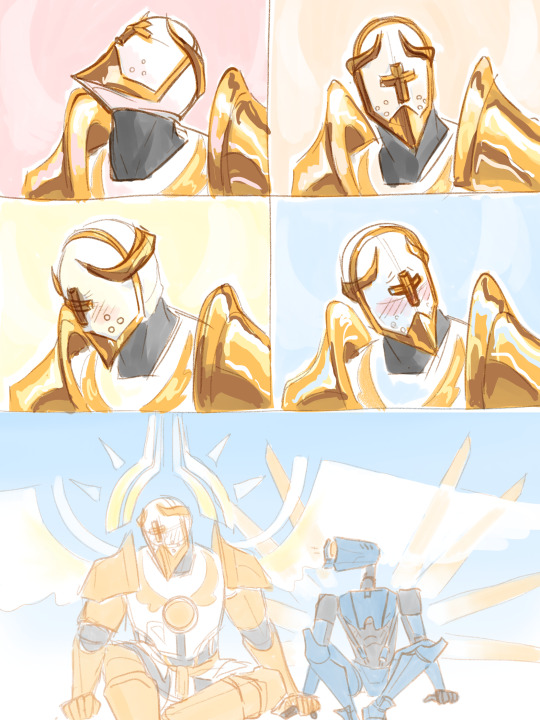

and then they fucked nasty the end
#my art#my writing#who fuckin sent this. fuck you. come off anon so i can kick your ass. (the thoughts this ask sparked consumed almost 3 days of my life)#i dont know what this even is#i just work here#disclaimer i don't come from a particularly religious background so like.#most of my knowledge of christianity comes from when my mom sent me to vbs for cheap babysitting in middle school or absorbed via osmosis#so i have no idea what im talking about except for when i do! hope this helps#i love how i say that like i expect biblical scholars to tear apart my ultrakill gay fanfiction#if you are a biblical scholar and you want to tear apart my ultrakill gay fanfiction please know i am not going to read the bible for this#ultrakill#v1 ultrakill#gabriel ultrakill#gabv1el#blood#love tagging ultrakill stuff with blood. hmm yes the floor here is made out of floor
2K notes
·
View notes
Text
Zionists want you to conflate Judaism and Zionism. Zionists want you to believe that Judaism cannot exist without Zionism and that all Jews are Zionists. Zionism would have Jews believe that a Jewish state is the only way that they can be safe from antisemitism and will point to any instance of antisemitism as proof that Zionism is the solution- so Zionism wants gentiles to be antisemitic in their support of Palestine. They want you to conflate all Jews with Zionism and the state of Israel, and they want you to treat all Jews regardless of political affiliation as the face of Israel. Antizionist Jews exist, and incidences of antisemitism ostensibly acting against Zionism will not help dismantle the forces propping Zionism up.
Don't do their work for them.
#red rambles#viva palestina#antizionism#i haven't actually seen a lot of antisemitism personally. not recently anyway. but that's more a feature of me not following antisemites#i DO however see a lot of people talking about the people they're seeing throw their support behind antisemites using palestine#as an excuse to conflate all jews with israel#and i cannot stress enough that that is literally what israel and zionist forces abroad WANT.#i am jewish. my entire family is jewish. i want to see palestine free. and i have SEEN how the jewish community gets conflated with israel#both from the inside and out#and i am dead serious when i say that every time someone is antisemitic it strengthens the conviction from people abroad#that it's a terrible sad situation but there's 'no other choice'#if you're being antisemitic you are doing the enemy's work for them. Stop it.#like... look. i am putting this in the tags bc im talking in the tags but i mean this. I do not give a single flying fuck if you personally#are a giant raging antisemite at the moment. Your personal beliefs are your problem and not mine. I do not fucking care. But if you are#being openly and loudly antisemitic *in your support of palestine* you are absolutely not fucking helping. I am so dead serious right now#if you want to raise awareness and you're being antisemitic because of deep held beliefs or whatever i want you to look around and read the#fucking room. Do you understand how much of Israel's international support comes from the idea that they are the only country where jews ar#safe from antisemitism? do you see how every time palestine comes up people point at incidences of antisemitism in anti-genocide actions to#discredit the entire movement? do you not understand how your actions are cutting the movement down at the knees?#i'm jewish and proud of it. i don't like antisemitism. but there's a genocide on and i'd rather work against it than quibble over who i#work alongside. i dont fucking care. you can be as antisemitic as you like in private. stop fucking the movement up.#there are bigger things to worry about here. if i can put aside my own concerns as to who i'm talking to you can hold your tongue#and fight the good fight instead of handing weapons to the people who are trying to fucking flatten gaza.
2K notes
·
View notes
Text

the world next door
hijack anniversary.............2! cannot believe we are 2 years deep into old friends senior hijack sanctuary. love forever to the wonderful friends i have met in this little corner of the weirdonet, you are a beloved part of my heart 🫶
IN PARTICULAR this goes out to @emerialyncodevenice because i swear i have done 12 different versions of this for your bday present AND FINALLY HAVE IT PERFECT. here is universe hopping art gallery au I LOVE YOU BESTIE‼️
#hijack#frostcup#jackycup#rise of the guardians#how to train your dragon#rotg#httyd#art#bestie tag#emerialyncodevenice#i had another idea i was planning on doing too if i couldn't wrangle this one into submission so i'll keep that one on the backburner.......#this piece would not have been possible without the help of my emotional support school photo day n1ki shi1na picture
2K notes
·
View notes
Text




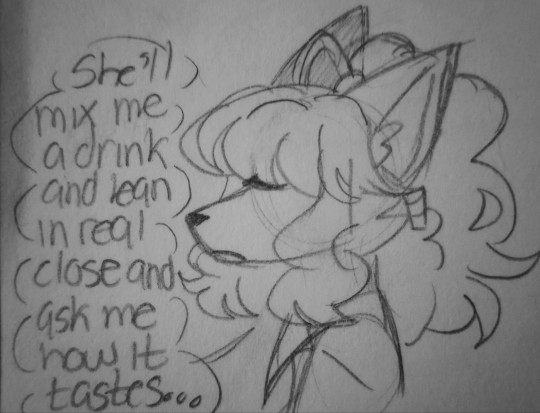
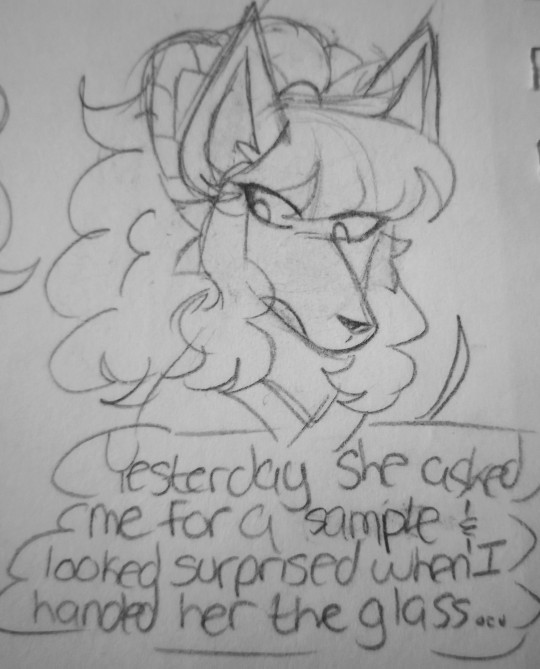

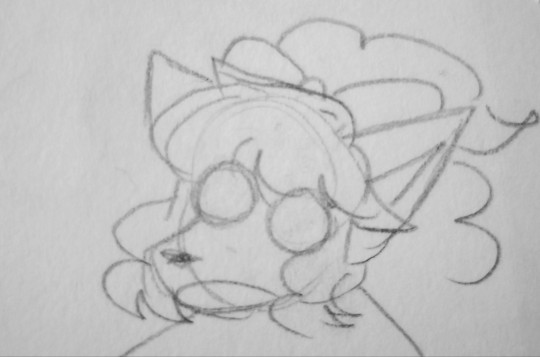
HOT TAKE.... They'd be cute :]
#Dina being Ceroba's shoulder to lean on when she doesn't think anyone else will understand ✋🏾#Ceroba having no idea how to flirt/not recognizing when people are flirting with her#Dina being okay with her feelings not being reciprocated as long as she can help by listening to her when she needs it.#the two having heart to hearts with Ceroba being the last customer in the saloon#i have so many thoughts#undertale#undertale yellow#utdr#uty#ceroba#ceroba uty#dina#dina uty#ceroba x dina#cerdina#dinroba#???#I'm sorry i am NOT calling them beer yuri 😭😭😭#I ALMOST FORGOT TO TAG STARLO#starlo#starlo uty#my art#sketch
534 notes
·
View notes
Text



An X-men sketch dump (ft. older doodles of myself idk idk). :)) Of course Kurt makes the most appearances. My fav doodle is probably sleepy Kurt in the second sketch page. This was when I was drawing him as a silly guy because later I try something else and idk if it works out lol.
Gave Jubilee some dimple piercings!! and ofc Kurt has one ear pierced. Also more shirtless Gambit doodles coming soon. Thank you X-men 97 for Morph and Logan, and the comics for Kurt and Logan also. I wish I would've added Ororo to the banter buddies, purely because I know she'd be lovingly roasting them alive. We love her. <3
I'm truthfully not happy with many of these doodles, but I'm posting them anyway, because I need to share my love for the X-men right now!! I feel like I'm going insane aisjisjis.





Idk when I finished these rip lol.
#omensarttag#i call kurt my wife as an inside joke with a friend and ofc i cant help but put tons of doodles and notes abt it. idk why i do that#xmen morph#kurt wagner#x men#hey what is morphs real name i actually have no idea omg im terrible#nightcrawler#artwork#digital art#x men 97#x men comics#marvel xmen#xmen fanart#fanart#logan howlett#ororo munroe#remy lebeau#jean grey#x men storm#x men wolverine#gambit xmen#jubilation lee#x men jubilee#art dump#sketch dump#artists on tumblr#queued post#queue#sorry for all the tags i hate them actually but also yk how it is
341 notes
·
View notes
Text

I interrupt the usual WTTT brainrot to bring you some Good Omens brainrot. 😇😈
This is my first time drawing these sillies. Plz bear with me as I figure out how to draw them!
Reference and details under the cut:


#good omens#aziraphale#crowley#aziracrow#I literally have no idea how to tag this#HELP NEW FANDOM#good omens fanart#mur art#not wttt
437 notes
·
View notes
Text

And some days, I just wish you wouldn't look at me at all.
#ffxiv#sketch#wol#meteor survivor#zenos yae galvus#adventurer zenos#oh no#its the consequences of his actions#everything is fine until the only man on the star you care about looks at you with the same contempt your father did#(Meteor's not doing it intentionally- its a reflex after he comes back for quite a bit)#and zenos is getting bodied because its been a while since... you know... him being able to really feel anything at all#and no- its not him regretting anything that had to do with varis- just him regretting the thought meteor could look at him like that#little does Meteor know he's emotionally bodying the man he's trying to be cordial with#its a little okay because in how I write adventurer zenos this serves as one of his main wake-up calls to make some changes#and realizing both the mistakes he's made with meteor and that meteor hating him in any way is actually -not at all- what he wants#but not okay on the end that every time meteor does this he has to watch zenos actively dissociate right in front of him#until zenos just kinda autopilots and walks away#the second time (or perhaps third) in the last 11 years that zenos has felt regret to any major capacity-#on meteor's end I just enjoy seeing the progression of the WoL through subtext#and why meteor is willing to even entertain the idea despite how much he hates zenos- his decisions and the path he's walked#is the realization that there is high chance that he could actually be a direct catalyst for zenos' growth#and the realization the wol has that they were the only one zenos has ever genuinely reached out to#besides- i just like the idea of having your equal other half fighting back to back with you- or being able to handle threats you cant#and i find their dynamic neat- of meteor not forgiving zenos but giving him his last chance- and growing to enjoy being around him#and zenos being able to work on moving past being the weapon or the monster- finding the connections he's longed for#and giving himself purpose to finally truly just live- for him to learn to experience and have the freedom to find what he enjoys#(and curiously him having estinien's brand of accidently helping people even in StB gives me ideas...)#but enough tag ranting- ill get to zenos' actual adventuring in another post lol
166 notes
·
View notes
Text
mandalore the young cont.
original post/discussion here! it was just getting really long and i for one hate scrolling so far, so. here's this. have also added this au to my masterlist in my pinned post!
@malcontent-crow
#i had a whole wall of tags and it didnt save! lets try this again#i am loving this. the potential for world building and the consequences of knowing more than you should (literally)
#i had forgotten that DW wasnt in peoples thoughts as a threat during the Clan Wars#and the idea that Pre was so far underground with the movement is a very good thing to remember as well!
#on one hand you have this driven and spirited young verd that is inspiring Clans to start reassessing who they are fighting and why#on the other you have this clanless outsider that knows waaaaay too much about all the potential major players and is saying#that this major threat isnt really as gone as everybody thought and hoped. sith parallels out the wahoo for ppor obi#and hes standing there watching them all argue over his head about this threat that he KNOWS needs to be dealt with#he is seeing himself as pretty on par or above with the Old Guard in terms of mental age or prowess or large scale battles#so he sees them doubt him maybe even to his face and knows he'll need to get things started on his own
#and becauae everything in the galaxay has at least one person watching it from the outside... how quickly does the news of a jedi padawan#going off the rails on this mission get out? whos keeping track and who points fingers at the jedi for attempting to control the outcome#of the war of their historical enemies in their favor? the senate (read sith) want mandalore defanged before their war but what does it look#like the jedi want? how does the council answer for his actions? do they condemn or condone him? do they try to stay out of it?
#the world building potential of the Manda and the Ka'ra is delicious.#what does it mean to be a mando or darmanda? can you walk around and have people look at you and know you have failed in your oaths?
#and ouch! Obi-Wan considering the fact that he has never been allowed to be his own person.#from padawan to knight/master and then a general and councilor and sheesh. hes really never had the chance to see who he is as a person#outside of his responsibilities to everybody around him and right now hes a war worn adult in a war worn teens body#hes always had somebody else there. as a battle companion a teacher a student as somebody to protect and guard and guide#and now he has this entire culture looking at him and waiting for his next move. and im guess it still feels like less than a burden than#the care and raising of an entire child on his own. sure he had the temple resources and other jedi to lean on but anakin always looked to#him first to solve any problem or teach him something new or cuddle him after nightmares as hes trying to hide his own dreams#and grief and flounding to find his footing as an independent adult
#so right now hes looking around at the entire mando population and realizing thats he might need to reshape himself again for somebody else#to make himself what others need and knowing he can and will do it if it means saving somebody else
#and when exactly did he come back from the war? did he have satine die in his arms and see the ruin that is madalore after a pacifist reign?#does he see the potential for that ruin to happen right now if he doesnt succeed? where does he see himself in regards to the jedi?#has he considered the consequences of stepping up to be the Mand'alor to this culture he has never seen as his own?#has he let himself think about the choices he needs to make and how some things you cant always come out the other side the same as before?
(following the trend of each of these getting longer, this has hit just under 5,000 words, so just a heads up lol? so much world building is happening in this one)
sorry you had to rewrite so much! that last exchange was cursed, it seems lmao
it's so easy to write Obi-Wan as prescient, or the route I'm going with in Dha Kar'ta, so i think it's a fun change-up to have him knowledgeable for completely different reasons! I'm actually going to avoid visions almost at all for this Obi, but everyone else certainly won't know the difference, and he doesn't tell them otherwise (though he won't encourage it either. I do actually have a Naruto time travel where Nart pretends to be psychic à la Shawn Spencer, so that isn't the route I wanna go for this Obi). the consequences of knowing too much, indeed
hmmm many of these questions depend on how deep into Jedi and galactic politics I wanna go, and I'm not sure it's very deep at all. or at least, not very dragged out. i'll explain in a mo
SO first: yes, this Obi is from after Satine dies, in 19 BBY, maybe a month or so after, but before the bombing of the Temple so before Ahsoka left the Order. He was back on the front, no time to properly mourn, though he was doing his best, and was meditating on the whole war, but especially the Sith and their hand in everything that happened on Mandalore. It went deeper than Maul, he knew, had been going on longer than Maul and even Dooku, and it occurred to Obi-Wan that the Sith either wanted a Mandalore that will side with them but not be too much a threat, or they wanted them not a threat at all. He realised his hand in that, in helping put the New Mandalorians on the throne that led to the demilitarisation of the entire sector. Obi-Wan had practically teed Mandalore up for Dooku and then Maul's interference, and if the Republic won the war, he could all too easily see them doing another excision. won't get too much into it to save it for the fic, but he is mediating with something beskar, and he gets a lil too deep into the Force, and of course this is post-Mortis so...... 👀
so this Obi-Wan, back in time, is helping Mandalore to prevent any more Sith machinations in the future, to change the future for the whole galaxy, but even before he's Chosen, he realises he's also doing all of this for Mandalore. for his own hand in its destruction, for the Jedi's hand in the Excision, for his personal connection to Satine drawing Maul to it. it's for atonement, for reparation, and also because Mandalore deserves to be saved, and Obi-Wan is in a place he can help do that. it isn't just about the health of the galaxy, anymore.
I usually shy away from having Obi-Wan leave the Order, no matter what AU I'm throwing him in because I believe in the fundamental goodness of the Order and the people in it, and Obi-Wan is fundamentally a Jedi, one of the best, one of the best. however, in this case, I don't think he can have his cake and eat it too. if Dooku had to leave the Order to accept his countship, then Obi-Wan would have to leave to become Mand'alor. Jedi are (supposed to be) politically neutral, and Obi-Wan is all too aware he'd nullified his own neutrality the moment he decided to go for Keldabe to find Jango.
one of my favorite... tropes? in time travel fic is Obi using his future fellow councilmembers' access codes to get into things he shouldn't, and he certainly knows how to work the Order's internal systems in his favor, so he
wait so i was gonna have him go in and tender his resignation from the Order directly into the systems, and backdate it for before the Mandalore mission, so that anything he's done on Mandalore so far cannot be blamed on the Jedi BUT WHAT IF he just. deletes himself. like completely. from admin to the Archives to the crèche's own internal systems to the Shadow's private servers, Obi-Wan Kenobi was never a Jedi, was never a Temple bastard, was never Qui-Gon Jinn's padawan. his mission records are all in Qui-Gon's name now, his medical file simply doesn't exist, his crècheling clan is listed as simply having been a person short compared to other clans that year. he goes so far as to delete comm histories with him or mentioning him, it's like Obi-Wan Kenobi just doesn't exist anymore.
he does this first thing after leaving Jango, he spends the entire week back to Mandalore ensuring he's been completely erased from absolutely anything relating to the Jedi, and then uses his future councilmember knowledge (and lessons from Quinlan) to erase himself from Republic systems, too. any planet he'd helped as a padawan will suddenly have no records of him as having been there with his master, so the senate or Order can't subpoena them for the info, though Obi-Wan knows he can't have gotten everything (such as any planet not in the Republic, or who don't have holonet access to their files, or both, like Melida/Daan), but he figures he's done enough to absolve the Order if anyone comes knocking about what he's doing.
he buries his lightsaber in the deserts of Mandalore, not knowing that in his old future, he'd have done the same on Tatooine.
so as far as the Jedi are aware: Obi-Wan went on a mission with Qui-Gon that (predictably) went to hell, got separated from his master for weeks to months, then suddenly changed, at the same time their Jedi with the highest prescience collapsed due to his visions, which have also changed. Obi-Wan left Qui-Gon behind to hightail it through the Mandalore sector, and Qui-Gon couldn't catch up or find him, and then Obi-Wan disappeared from anyone's radars for two weeks. then Qui-Gon senses him reenter the Mandalore system, right before breaking his training bond with him, and the Order wakes up to Obi-Wan completely erased from their systems like he never existed in the first place. everything is going so so wrong, and yet. and yet.
and yet the Force is telling them all that this is right, that this is the least Dark course of action, that whatever Obi-Wan is doing is indeed the Will of the Force
so the Order mourns one of their own, and tells Qui-Gon to let him go. and then the Order ups their cyber security because what.
i think he leaves an unsigned letter/comm message for a few people. Bant, Quinlan, Mace, Feemor, his old crèchemaster, Yoda, maybe Jocasta Nu. it's short, basically thanking them for their hand in his upbringing (Feemor hasn't even met him before so is very confused by this), apologising for leaving abruptly, but to follow the Will of the Force, he had to leave; the first part of the message is all the same, but ends with little individual notes. he apologises to Madam Nu for fucking with her archives and hopes she can one day forgive him; he asks her to keep her friends close and to mend the tension between her and Dooku, that Obi-Wan should not know about. He tells Yoda that the future is always in motion but they must move with it; he asks Yoda to meditate on his dwindling lineages and learn to accept all that he cannot control. He reminds Quinlan to wear his gloves and asks him to thank Tholme for looking out for him when Qui-Gon wouldn't or didn't; he thanks him for their years together, and asks him to check in on Feemor every now and then. He apologises to Mace for all the shatter-points he likely caused and will continue to cause, and suggests he put a permanent reminder in his comm to remember to refill his migraine prescription that sixteen year-old Obi should not know about. He asks Bant to look out for a young Togruta initiate that will join in seven years, and suggests Bant might like the healer track rather than the knight corps; he thanks her for being his longest and most dearly-held friend. He thanks his crèchemaster for realising his visions were more than dreams (which will inadvertently lend credence to that theory for why Obi-Wan changed so suddenly), for supporting him when Bruck was at his nastiest, and for always being someone he could turn to even after he became a padawan. For Feemor, Obi-Wan apologises that they hadn't had the chance to meet before then, and for the relationship they won't have anymore; Feemor has no idea who this message is from, until he starts hearing the gossip that Obi-Wan Kenobi has left the Order again. He too mourns never getting to know his padawan brother.
and Obi-Wan sends Qui-Gon a message, of course, thanking him for his teachings, apologising for "leading him on" as an apprentice, leaving and coming back so many times only to permanently leave this time. he reminds Qui to reach out to his friends and his support system, asks him to at least consider talking to a mind or soul healer about Xanatos (knowing that once it gets out that Obi-Wan is a planetary leader, it will likely badly trigger Qui-Gon), and asks him to at least try and mend his relationship with Dooku, though understands if that's not something Qui-Gon is willing to do. asks him to keep Satine safe, but to deeply think about why the Republic is so intent on helping her faction, and why Qui-Gon had questioned so little of the New Mandalorian ethos.
so by the time Obi-Wan finds the Old Guard, he's broken from the Order completely, has buried his saber, has broken his training bond, has cut his braid. I think he shaves his head entirely to let it grow out at the same rate, because the padawan cut is *Eliot Spencer voice* Very Distinctive. he paints his armour white for, yes, his men, his vod'e, but also for cin vhetin. he can't be the man he was before, nor the teen he was before, neither are who Mandalore needs, and as long as he can stay true to his morals and upbringing, he will be what Mandalore needs him to be.
okay now onto the Manda vs. the Ka'ra vs. the Force. the Force is a scientific concept of an energy connecting absolutely everything in the universe, and the Jedi have a religious view on the scientific concept. for both purposes, the Force just is. I really like the idea of other non-Jedi ideas just being different aspects of the Force, different religions and cultures based on the same scientific concepts. for Mandalorians, their "aspect" of the Force is the Manda, the collective souls of every Mando'ade that's ever marched on. just what it means to be Mando'ade has varied greatly through history, and is varied between different groups even now, but none of that changes what the Manda is, which is an aspect of the Force only Mando'ade can touch. sort of like their beliefs of it being separate from the Force have made it so?
now I haven't really talked about this before, but from the beginning of me writing Mandalorian related things, i've separated Ka'ra from ka'ra, which was a little bit me misremembering there was another term for "stars", and then it became it's own thing. kar, meaning "star", with it's plural kar'e or kare, to me, means physical stars, the way we'd call our sun a star. ka'ra, uncapitalised, is the more poetic and/or spiritual "stars", the way we might say something is "written in the stars", which actually aligns with how jate'kara is spelled; for my writing, i've used this form for Mandalorian Force-sensitives being Star-touched ka'ra-touched. Ka'ra, capitalised, is that "ruling council of fallen kings", the Mandalorian myth and it, the way I've always interpreted it, is a separate part of the Manda made up of specifically the souls of every Mand'alor already marched on. So, Tor Vizsla could have joined the Manda after death, but not the Ka'ra; make sense? all that ka'ra vs Ka'ra worldbuilding was done very early in my writing for star wars, and has since expanded to include the idea of the Manda as something separate, and I would now actually consider Manda-touched over Star-touched to describe Force sensitive Mando'ade, because that's really what I think Mandalorians would consider causes their supernatural powers: ancestors rather than the stars.
so what does that mean for this fic? the Manda is directly influenced by all those that consider themselves Mandalorian, Force-sensitive or not. it is, however, not affected by New Mandalorians, unless they worship the Manda in some facsimile, and I think many, many, many do not, not the way they were raised to. this worship looks different for every clan and every individual, and I've always interpreted it as more of a broad spiritual practice across the whole culture rather than a religion, per se, the way a real-world broader culture might pray at shrines at New Years even if individuals themselves or their family aren't religious. this is what I'm referencing when I say the Will of the People: the alive Mando'ade and their choices and emotions affecting and influencing the Manda, the collective amalgamation of every passed-on Mando'ade, and it's when these two are in tandem that they "pick" a Mand'alor. HOWEVER, such a pick is also up to the Ka'ra, the Mand'alor'e that have all marched on; to one day enter the Ka'ra themselves, a Mand'alor must be "picked" by both the People/the Manda, and the Ka'ra. Tor would be "picked" by a significant part of the People and the Manda, and so would Jaster have been, but (according to me, myself, and i, obviously), only Jaster had been chosen by the Ka'ra. Pre is "Mand'alor" only in name, only in a tenuous loyalty existing in House Vizsla and Death Watch, not even by the Manda; just simple human (et al) loyalty. Jango had a weaker "pick" from the Manda than Jaster did, but was picked by the Ka'ra, meaning if he did not declare himself dar'manda (even just internally; I don't think he's ever said it out loud), he would have joined the Ka'ra after death; if he ever reconnects with himself as a Mandalorian, I like to think he'd have that chance again. Canon Jango, though, who went on to make the clones? Absolutely not.
what does this all mean for Obi-Wan? he'd spent weeks inadvertently drumming up support in the people and therefore the Manda, and maybe most haven't really looked at him and thought "sure I'd follow him as Mand'alor", but they have looked at him and thought "that one has mandokar, that one wants what's best for Mandalore, that one is touched by destiny". I dunno, man, like. Obi-Wan is their hope before he is their leader. That will make all the difference when he does end up uniting them. His searching out Jango had made Jango finally confront that he feels dar'manda, until then he hadn't really lost the Ka'ra's support, but that severs that connection. and now the Ka'ra are without a Mand'alor, but look at that, there's a mandokar'la little idiot right there, already strong in the Manda, already rallying hope and purpose, already so invested in the nurturing and the future of Mandalore, how could the Ka'ra not choose him?
I posed the question previously whether or not Mando'ade can tell who has been chosen to be Mand'alor, and I think I've ironed out what that'll mean for this fic. non-Force sensitive Mando'ade will have this sense when near their Mand'alor, a subconscious and inherent trust in them, and indeed, some will be disturbed by this and fight it. that's alright, that's their right. Some never clock this extra sense, some are aware of it always, some just chalk it up to "gut feelings" and the like. The more spiritual or religious Mandos maybe put a little more stock in this feelings, I think especially goran'e and other spiritual leaders, but the fact that the Manda can technically pick more than one person at a time (like Tor and Jaster, and then Jango), this extra sense isn't a perfect indicator of a properly chosen Manda'lor.
now. what about Force sensitive Mando'ade? Well, the Manda is an aspect of the Force, and is in fact how said Force sensitive Mando'ade connect to the Force, by going through the Manda, first. their relationship with sensitivity is inherently different from others in the galaxy, at least those that connect to it directly. they are the ones that can sense or see if someone is chosen by the Ka'ra, depending on their sensitivity. Some see the ghostly line of previous Mand'alor'e stretched out behind them (like the Avatar cycle lmao), some see a wavering crown of stars around their head, some just sense there is a duplicity (/neutral) to their Force presence that doesn't exist in anyone else. how common is Force sensitivity in Mandalorian space? not fuckin very. Jaster had three in his entire faction of aprox. 2 million (fanon number), at least that were aware they were sensitive. Jango only had a few more, and only because he had gained a couple hundred thousand more followers before Galidraan. so i'll make the nearly-arbitrary number that Force sensitive Mandos are 1 in 1,000,000, across the entire sector. by some calculations, in the whole galaxy at around the time of the Clone Wars the number of Force sensitives is 1 in 5,000,000 but these calculations do not generally include societies and species with a near or 100% chance of Force sensitivity, because we simply don't have the data for it. does this all make Mandos slightly more likely to be Force sensitive than others, by my own numbers? sorta. which i'm making an issue of underreporting, based on Mandalore not being a part of the Republic, and also contention with the Jedi and Sith; they don't consider those Manda-touched to be Force sensitive, and with the way I've built this, they aren't exactly wrong.
for the purposes of this story, there are maybe eight Manda-touched Mando'ade in the Mandalore system at this time, and all but one are goran'e. that single non-armorer is part of the Old Guard. I have the roster for the Old Guard decided, so I'm debating whether the Manda-touched one is Cort Davin (a journeyman protector), or one of the women. Instinct wants Vhonte Tervho, but I have plans for her to be related to the goran Obi-Wan got his armour done by, who I wanted to be one of the seven Force sensitive armorers, soooo. lmao how fucked would it be if Isabet Reau is the Force sensitive one? I like the angst of that, since I definitely do not plan on redeeming her, but I kind of want the only Old Guard that can sense Obi-Wan is Chosen by the Ka'ra to be really quiet and accepting of it, while everyone else is arguing. hmmm I have an unnamed Wren as part of the Guard, that I haven't fleshed anything out for yet; perhaps them?
okay I think I've solidified what it makes a Mandalorian, at least for the function of this fic. it is tied to the Resol'nare, and following it, which does allow those who had Chosen Tor Vizsla as their Mand'alor to technically still be following the Resol'nare, and are therefore not dar'manda. at least not for that. but part of the reason the Resol'nare is even able to determine who has a Mandalorian soul, is because they believe it does. Those alive and those dead influence the functionality and reality of the Manda, which also allows for those pre-Resol'nare to still exist in the Manda. What causes someone to become dar'manda, if they are technically following the Resol'nare?
maybe it's reductive, or over-simplified, or maybe even too broad, but it makes sense to me and allows for many many different types of people to still fail, and this is obviously not the only way to become dar'manda, but one thing that will always strip someone of their Mando soul? treatment of children. caring for children. not harming children. this allows many of Death Watch to still maintain their Mando souls, but still be fucked up awful people in other ways. It allows even True Mandalorians to have lost their souls and not realised it because they otherwise adhered to the Resol'nare, because they'd chosen to interpret "defending oneself and family" and "raising your children as Mandalorians" to not include other peoeple's children. Or maybe they were abusive in the belief they were caring for their children. This would also make every single one of the Cuy'val Dar dar'manda, which I think is a fascinating concept.
to answer your question directly, no, one cannot look at someone and know they're dar'manda, even the Force/Manda sensitive ones. one will only know in death, whether or not they have a place in the Manda.
NOW what does this mean for New Mandalorians?? well, by technicality and the way I've set the Manda up, one can interpret the Resol'nare in ways that could align with New Mandos. Perhaps they interpret "armour" as more than specifically "beskar'gam", maybe they wear armourweave or other protective fabrics. Maybe they interpret "defending one's family" as putting down arms instead of raising them, in order to create a peaceful future for their children. I think there are plenty of New Mandos that technically tick off all the boxes, and believe in themselves and their fellows so much that the Manda is like "yeah sure why not, we'll make that count". I think some tenants are more easily... bent, like swearing to the duchy in place of the Mand'alor, but I think an easy one New Mandos miss, is "speak Mando'a." I think many New Mandos were all too quick to switch to Basic for everything except religious and spiritual ceremonies, and I think those already in the Manda would find that very hard to forgive. I actually get into this a little in Dha Kar'ta very soon, but for this fic, i'll have Satine not outright outlawing Mando'a, but it is socially heavily discouraged. you're not allowed to speak it in the palace unless in aforementioned ceremonies, you cannot fill out paperwork in anything but Basic, you're not allowed to use Mando'a titles (including Mand'alor), you're not allowed to teach it to your children. no outright like. punishments for speaking it in public, but if your kids are caught, there are repercussions, including investigation into how else you're raising your kids, and if you're found to be doing anything else, they can take your kids from you. not every New Mando agrees with this, of course, and go about adhering to the Resol'nare as best they can in secret, but so many do give up the language by convincing themselves it's not as important as the other tenants and, well, the duchy hasn't steered them all wrong yet, has it?
okay so on the subject of what the outside galaxy is seeing. I like the headcanon/trope/idea of like. the one thing all factions of Mandalorians agreeing on is fuck everyone else. oh, the New Mandos will emulate the Core and the Republic, but they aren't the Republic nor want to be, and this animosity extends to keeping as many internal Mandlorian issues just that: internal. no faction can keep news from leaving the system or the sector, obviously, but there also isn't a lot of interest in Mandalorian news? "oh look all the Mandos are fighting again", except that's been the standard for like. actual thousands of years. I like when fic have people outside the sector not evening knowing there are different factions, so I'll be doing that here, too, and I like the idea of non-Republic sectors having their own holonets, separate from the Republic one. so like, if Obi-Wan happens to go a little viral during his mad dash to Keldabe, that would be on the Mandalorian holonet, not the Republic one, so even if Obi-Wan was visibly still a Jedi (and he wasn't), actual news of him wouldn't reach the Mid and Inner Rims until like. possible years after it happens.
could this maybe be expedited by Sith machinations? absolutely, though I'm not sure I want to go that route, since I don't think the Sith are overmuch interested in Mandalore at this point, at least not in any hands-on capacity. I'm unclear on whether them funding Death Watch is fanon or not, but it is a headcanon I subscribe to, and I think they'd have stopped funding DW after Galidraan, to cause worse infighting and prevent DW from gaining enough power to actually restart their imperial conquering days. Palpatine has been senator for about ten years by this point, but has very little political power overall, and Demask would be looking basically anywhere but Mandalore at this point in time, both of them having written it off until they actively need something from the sector. if anyone had clocked Obi-Wan as a Jedi, this all would have gone very differently, news would have spread much further and quicker and I think undoubtedly would have reached Palpatine, but since I have Obi-Wan just... cutting ties to anything Jedi, news of him remains in-sector. is this perhaps unrealistic? maybe, but I kind of want to focus on Mandalore and not worry about galactic-wide politics for once, lmao, actually very much like Obi-Wan is doing. however, he will clock a lack of Sith interference and thinks That's Very Weird.
haven't decided how he finds Palpatine out yet, but I think it'll have to do with his Manda senses being different than his Force ones, maybe the Ka'ra even gives him a few tips or gifts to sense Sith since they've allied and fought with them so much in the past. regardless, that'll be after he's become Mand'alor and united the clans.
now to actual plot progression! Obi-Wan meets up with the Old Guard, they don't know what to make of him other than "he's kriffing weird. and young. and creepy. and probably Manda-touched." whatever other verd is Manda-touched will see him blessed by the Ka'ra, which causes them to look inwards more closely and realise they trust Obi-Wan inexplicably, which means they're blessed by the Manda and the Will of the People, too. they wonder if Obi-Wan has noticed, if any of the other Old Guard have noticed. they are one of a few that notice Obi-Wan sneaking back out while everyone is arguing.
Vhonte Tervho is another. She's at this lil summit to represent clan Tervho, tho isn't the clan head, because her ba'vodu, a Manda-touched goran, had sensed she needed to be at the summit. said ba'vodu is of course the armorer who reforged Obi-Wan's armour (need to find a name for them hmm), who had told their clan they were to cease fighting until their new Mand'alor called on them. Vhonte sees Obi-Wan, realises at the same time as everyone that he's the Kih'Manda, the Mand'ika that the entire system had been gossiping about for weeks, and she thinks of what her ba'vodu said. she looks inwards, like they had taught her to, and finds, yes, she trusts Obi-Wan, just like she used to trust Jango. And, well, her Mand'alor is obviously leaving to go do something, and she isn't going to let him go it alone.
the Manda-touched verd doesn't go with them, wanting to see what comes of this, but they already know Obi-wan is Ka'ra Chosen. they will come when he calls.
#prequel trilogy#time travel au#obi wan kenobi#star wars#crow i love the way you breakdown everyone's characters and expand on what i'm putting down#like in the two blocks of tags that i've italicised#they make me feel all warm and fuzzy that you're getting so much out of what i'm doing and also they're just a DELIGHT to read#and have informed later characterisations and changed how i've thought about stuff i've already written#mandalorans#world building#vhonte tervho#will be pulling many characters from repcom obv#but fuck karen traviss as both a person and an author so there's that heads up#also!! anyone can ask questions or comment or reply#would love to hear y'all's thoughts and ideas and i LOVE answering#this au would not exist without crow asking me all these questions. just straight up wouldn't exist#malcontent crow#still trying to figure out if i can work in luminara in a way that doesn't feel shoe-horned#several people have voted QuinObi which i am very much not against#it would be SO easy to have Quinlan just. book it to Mandalore#at first to convince Obi-Wan to COME BACK but then he sees what Obi is actually doing and realises he can't do that to Obi or to Mandalore#does Quinlan... STAY on Mandalore with him?? 👀 👀 does he accept he needs to let Obi-Wan go?#does he stay as a Jedi Shadow and help out or does he leave the Order too??#many questions many thoughts
148 notes
·
View notes
Text
learning to spin on a drop spindle: a beginner’s lengthy yet comprehensive guide
I put this monograph together for a friend, but many other people wanted to read it as well, so here it is !

Fig A: Parts of a Drop Spindle. (image source. notes are mine. Click for higher res !). Apologies in advance for the lack of image descriptions--for the most part I use images because I can’t figure out how to describe the thing in words, so describing the images is kinda the whole issue. If anyone wanted to write them for me I’d add them to the original post in a heartbeat !
How to Get Started Drafting and Spinning
So, you have your fiber and your spindle--now what ?




Friendly pre-tutorial reminder that radfems can fuck right off if they think I’m writing any of this for their benefit. I’m not. I hope they all choke on their spindles <3. This is a safe space for trans people first and foremost.
(Check out this post that goes into picking a spindle and your first fiber, if you don’t have one yet)
First, you might wish to practice drafting a little. Drafting is the process of drawing the fibers out from, for example, a strand of roving or a rolag, into a thinner, airy length. To draft, loosely hold your fiber in your dominant hand, and pinch the very tip of the fiber with your thumb and forefinger of your non dominant hand. Then gently pull. If you pull all the way, you should notice that your fiber detaches from the fiber source eventually. For yarn, we want very very long lengths, so we don’t want that to happen. To get a continuous length of drafted fiber, simply change where you’re pulling from as you go. For example, you can draft out 2 centimeters/1 inch of fiber, and then move your fingers 2 cm/1 in back toward your fiber supply, and draft again.
The thinner you draft (or pre-draft*), the thinner that fiber will spin up. Once we start spinning, you’ll see how adding twist immediately compacts the fiber quite a bit, so you need to draft much thicker than you actually want your yarn to be. When pre-drafting specifically, if in doubt--draft thicker. You can always draft it out a little more as you’re spinning.
Figuring out how to draft smoothly can be one of the harder parts of learning to spin, but even before knowing how to do it perfectly you can still create good yarn.
Check out The Joy of Handspinning website to see drafting in action, as well as several different types of drafting.
Also check out this video explaining pre-drafting roving. 1:00-2:30 is especially helpful. If it’s not clicking from this video, search youtube for “pre drafting fiber for spinning” and watch til you have a better understanding.
*pre-drafting just means drafting before spinning--so it’s the same type of thing as drafting while spinning, but without having to wrangle your spindle at the same time. I’d recommend pre-drafting at least a bit of your fiber until you feel comfortable doing it. Then you can spin with your pre-drafted fiber, and it’ll be easier than if you hadn’t pre-drafted.
Tips: If you have a bottom whorl spindle, you may also want to practice spinning the spindle before it has any fiber on it, just to get a feel for how it moves. You could do this with the bottom point in a bowl or on a flat surface like a book or table. Try rolling the top of the shaft between your thumb and index finger. Don’t worry about it toppling over frequently--your spindle will be suspended by the yarn that you’re spinning, so it won’t topple !
If you have a top whorl spindle, you might have a harder time getting it to spin without being suspended, because the center of gravity is so high. Instead, try tying a piece of thread or scrap yarn to the hook (if it has one) or below the whorl (look for figure B below) and secure it with a half hitch knot. Then try spinning it like that, and let it hang freely to unwind itself whenever it has too much twist before you try again.
You can also try spinning a bottom whorl suspended by scrap yarn or thread. The advantage of trying it while it’s suspended is it can allow you to watch twist being added and see what it does without messing with your handspun, as well as letting you get a feel for how it moves while suspended. If you have a bottom whorl, I’d give both a try !
---
Now that you can draft, you’re gonna want to attach your fiber to your spindle. Some people use a leader to do this--it’s a pre-spun loop of yarn that you tie to your spindle. Then you loop some pre-drafted fiber through the loop of the leader, add twist til it holds, and off you go.
Another way to do it is without a leader. I’m much more familiar with this method, and I find it way easier, so I’ll go into more depth on this one:
1. Take the end of your pre-drafted fiber (you will need enough pre-drafted fiber to go from the underside of the whorl to the very top of the spindle, and then back again. If you’ve pre-drafted way more, don’t worry. We’re just working with this short amount for now, but it can stay attached). Make a slip knot at the end. You can roll the fiber between your fingers to add some twist if you’re having trouble making a slip knot with it. (Tip: if you’re having trouble getting the fibers to roll, wet them slightly with water or spit and it will be much easier)
2. Put the slip knot on the bottom point of your spindle, and slide it up so that it’s at the whorl.
3. Gently wind the pre-drafted fiber up the spindle shaft, until you are at the hook or top. Wind it over the hook (or do a half-hitch knot at the top--if there’s a groove near the top your half hitch should sit in there, otherwise it should sit as close to the top as possible while still being secure. You may drop it a few times while learning where the perfect spot is--such is life). Be careful with pre-drafted fiber--depending on staple length and fiber type, it can pull apart quite easily. The trick to keeping that from happening is to keep it a little slack and loose until you have added twist to it.
4. Pinch your pre-drafted fiber between your thumb and forefinger on your dominant hand, about 1 hand’s width from the top of your spindle. Turn the spindle in the direction you intend to spin your yarn (usually this will be clockwise, or to the right). Spin the spindle until you have the desired amount of twist. You should notice that all the fiber above the hook/half-hitch has twist, while the fiber below it has none. You need all of it to have twist, so let’s even it out--pop the half-hitch off with your thumb/unwind the yarn from the hook, unwind the yarn from the shaft so that the entire length you’ve worked with so far is stretched out. This will allow the twist to equalize. Now wind it all back up and put the half-hitch back/wind around the hook again. You may need to repeat this a couple times to get your starting fiber fully twisted (don’t worry though--you only need to do this at the very start. From here on you shouldn’t need to equalize twist like that until the next time you start from an empty spindle).
You’re done attaching the fiber--now you can spin !
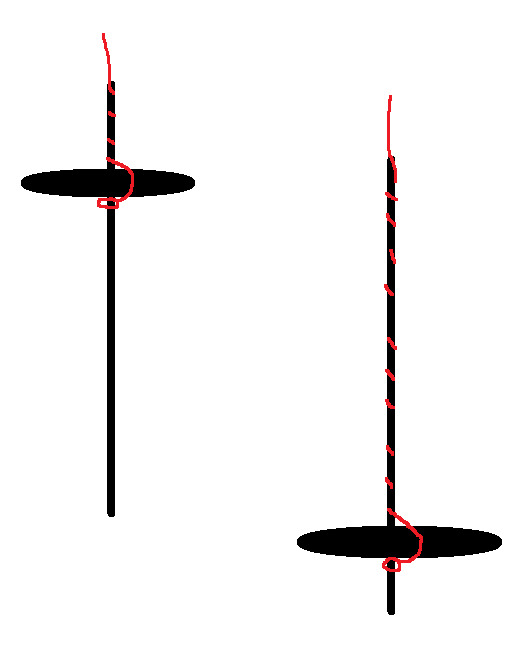
Fig B: How your yarn should sit on a spindle, both top and bottom whorl
If that doesn’t make sense, here’s a video showing how to attach it with and without a leader. If that doesn’t help either, search youtube for “how to attach leader to drop spindle” and keep looking until you have a better understanding.
---
So you know how to draft and your fiber is attached to your spindle--now it’s time to spin ! There are 3 different parts to spinning a singles on a drop spindle.
1. Adding twist. This can be done with just your hands, but the spindle makes it a whole lot faster. This is the purpose of a spindle--to add twist very quickly (and as a bonus, it’s a handy place to store the yarn as you spin it !). All you have to do is spin the spindle, and the only trick is to make sure you always spin in a consistent direction--don’t start a project spinning clockwise and end it spinning counterclockwise ! You’ll have an impossible time plying it then. There are a lot of different ways to spin a spindle--you’ll see a few watching the videos here, and more if you search out videos of drop spindling yourself. Whatever method is comfortable and practical for you is what you should do.
2. Drafting the fiber. You already know how to do this part !
3. Winding the yarn on. When your yarn is long enough that adding more length will make it hard to work with, you’ll want to wind it onto the spindle so that you can get back to spinning. To do this, pop the half hitch knot off the top/unwind from the hook, unwind along the shaft, and wind it near or at the base of the whorl, in the orientation seen in the very first picture. Always wind in the same direction that you’re spinning, to stop your yarn from flying off.
I would highly recommend starting with the method known as “park and draft” while you learn. In this method, you first add a ton of extra twist (usually as much as you can) and then put the spindle down and draft until that extra twist is used up. Then you wind on, and repeat. This isolates the actions of spinning so that you are only doing one at a time, which makes it a lot easier. Most people move on from this technique once they’ve figured it out, but you don’t have to--the drawback is that it’s typically slower, but hey, spinning is a slow craft anyway. There is no wrong way to spin, and everyone’s hands and bodies have different needs and work in different ways.
How to Park And Draft
First, use your dominant hand to pinch your pre-drafted fiber a few inches/6 cm above the top of the spindle.
Now just spin the spindle clockwise, until it won’t really spin any more. (Don’t try to get ~the most twist ever achieved~ or anything like that--your yarn can potentially snap from too much twist. Take your cue from the spindle--when it stops wanting to spin, you’ve got enough twist.) Don’t let the twist advance beyond where you’re pinching it off.
This is important--if the twist gets into your fiber, it becomes much harder to draft it. But don’t worry, you can undo this by pinching just above where the twist has entered your fiber, and with the other hand just below (pinching the actual yarn here). Now (with the hand that’s pinching the yarn) roll in the opposite direction that you’re spinning in. This will move the twist down into the rest of your yarn. Let go of where you’re pinching the fiber, slide your yarn-pinching hand to where it usually is as you’re spinning, and get back to it.
Your leader/yarn should be very kinked up and wiry. Now put the spindle between your thighs (or between your knees, under one knee, or under something heavy that won’t damage your spindle. Thighs are convenient, but if it’s uncomfortable, try putting the spindle somewhere else. It needs to be held firmly in place and not move around). This is the “park” part of “park and draft”.
Now, you want to be pinching the twist off at the same spot, but using your other hand instead. I usually pinch right above where I’m already pinching and let go with the lower hand.
First we’re going to just bring the twist up the pre-drafted fiber by sliding your pinching hand up the fiber, slowly and gently. You should see the twist follow behind your hand as it enters the fiber. If you have lots of pre-drafted fiber, you might wind on, add more twist, wind on again, etc. You could also draft out your pre-drafted fiber (this is what the majority of more experienced spinners who pre-draft do) while you go.
The “draft” part of “park and draft” is just like pre-drafting, but one end is attached to a spindle. This gives you something to lightly pull against, if you want. Draft slowly and with purpose.
At a certain point, you will run out of excess twist. At this point, wind on. If you’ve only done a short length, you can also add more twist, park it again, and go back to drafting.
If you’ve run out of armspan but still have lots of excess twist, unpark your spindle (let it hang free) and allow it to untwist a little, monitoring it closely. If this happens often, try to put less energy into twisting your spindle, or allow it to twist for less time.
The amount of twist that your yarn has matters a lot--it will impact your finished yarn hugely. A yarn without enough twist will be very limp and might even fall apart as you handle it. A yarn with too much twist will be wiry and inelastic. You want to find a middle ground where it’s got just the right amount for what you intend to use it for--a hard, inelastic wool yarn can make a good bag, but not a very good hat.
To see how much twist you’ve added to your singles as you spin, try a plyback test ! This is really quick to do on spindles--just relax the distance between your fiber supply and the top of the spindle. When the yarn is no longer taut, the live twist will cause it to twist back on itself. With too little twist, you may just get a few sad loops (or no loops, if it’s super undertwisted). With too much twist, you may get tons of tight little curls of yarn. With a good amount of twist, you should have a few good curls (just one if it’s a short length of yarn, or several if it’s your armspan) that aren’t too tight. Those curls are what your yarn will look like once 2 plied, so it’s a great litmus test for whether you’re adding the correct amount of twist or not.

Fig C: What different amounts of twist looks like in your singles.
To fix too little twist, just spin the spindle a little extra until it looks right. To fix too much twist, either draft more fiber or else let the spindle untwist a little.
You can and should do this before winding each new length on, at least while you’re still learning the motions.
Check out this video of how to spin with the park and draft method ! 0:00-4:45 is intro and attaching the leader. 4:46-9:00 is the method itself (note to friend: don’t watch past 9 mins). If this video doesn’t work for you, search “drop spindle park and draft” on youtube.
A few interim tips
1. It’s critical to hold your fiber supply loosely. If you find that you have put a lot of force into drafting, then you are either holding your fiber way too tight or your hands are too close together (or potentially both). Drafting should not require force. If it is requiring force, adjust your grip and your hand placement continually until it gets better, and refine from there.
2. Try to put some tension on the yarn as you wind it on. This will make it sit a little neater and flatter, so that you have a more stable cone of yarn and can fit more on it.
3. If you draft out your fiber so much that it runs thin and just sort of disintegrates, just pull off the most wispy parts from your yarn and the fiber supply, then hold the two together again, making sure to overlap by several inches/6-10cm. Gently draft out a little and add twist before putting that join under the weight of your spindle, or it will fail again. You can join from one fiber source to the next one (necessary with rolags, hand combed top, and strips off of batts) in a similar way; make sure to leave a little unspun fiber for a good join, and overlap the end of the first fiber source with the beginning of the second by about an inch/2.5 cm.
4. If your yarn snaps (rather than your fiber running thin as you draft), it’s because it was A) twisted way too much B) spun too fine for the drop spindle you’re using C) both A and B or D) your spindle has become heavy enough that it can no longer spin as fine as you were spinning.
For A, B, and C: remove as much twist as you can from either end of the snapped yarn, then put both ends in your upturned palm, overlapping them over the whole width of your palm. Add enough either water or spit to get them good and wet (not dripping, but they do need to be wet). Now place your other palm down on top, and rub vigorously for about 30 seconds until the ends have joined together. If necessary, you can also just tie the ends in a knot, although it’s not invisible and you can usually feel it in the finished yarn.
For D: is your whorl removable ? If so, remove the whorl and continue spinning. If not (and for the vast majority of beginner’s drop spindles it won’t be), your spindle is full ! Even if there’s still room, it’s too heavy to continue spinning on for that project. You could keep going spinning a thicker yarn, but that means your yarn will randomly get thicker somewhere near the end, which works for very few projects. If this happens to you when there’s still tons and tons of room on your spindle, that means in general you ought to spin thicker yarn on that particular spindle if you want to fill it up all the way.
Okay, I spun yarn, now what ?
So at the moment, you have what we call a singles (some people just say “single”). That can be used as is, or it can be plied--that is, held together with more strands of singles and twisted in the opposite direction. But either way, you need to get it off your spindle !
If you’re going to leave it as a singles, then you’ll be winding it into a skein (we’ll get into that later). If you want to ply it though, you’ve got a lot of options. (I’ll get to how to actually ply later, this is just discussing those options.)
Many Methods of Plying
Plying Straight Off The Spindles
First, if you’ve got multiple spindles capable of spinning the same weight of yarn, you could just set your full spindle aside and spin another one. You’d need at least 3 spindles (the third, ideally, a bigger plying spindle) to get a 2 ply yarn, and 4 spindles to get a 3 ply with this sort of setup. This is what I do with supported spindles, since I have many, and I can attest that it saves a lot of winding time and is terribly convenient.
But it’s also probably not doable for many people, and it’s ridiculous to buy 3 drop spindles when you’re just getting into it !
Wind And Store
Second, you can wind your singles onto something for storage, and then use your now-empty spindle to spin another singles. Two great things to store yarn on are small rocks and empty toilet paper (loo) rolls.
Winding it around a small rock is better than just winding it into a ball for plying, since the rock will weight it and stop it from flying up in the air once you start plying. A big pebble works great. With this setup, you’d want to put all your balls of singles in a bowl or container of some kind, hold the ends of each, attach it to your spindle, and let them roll around as you ply.
They can tangle (mine usually don’t, but it can happen), so the toilet paper rolls might be an upgrade--these can be put on a stick, and the stick can be put on something (or you can poke two holes in a cardboard box, put the stick through one hole, load the rolls onto it, then put it through the other hole as well) to keep it stationary so that the rolls... well, roll. This requires some storage space (usually if you do this often, you don’t wanna make a new one every time, so keeping it is preferable) and is honestly not a huge upgrade... unless you have a ball winder that can wind the yarn onto the TP rolls for you, in which case this is a big time saver. If you don’t have one and don’t have issues with tangling, the rocks will probably work just as well and take up a lot less space.
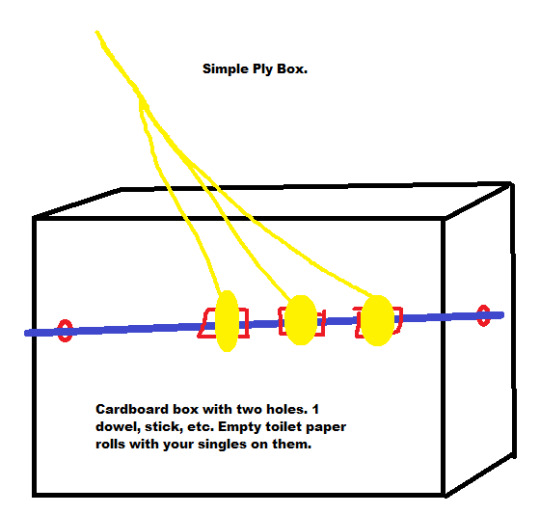
Fig D: Diagram of a Simple Ply Box
Ply Bracelet
Thirdly, if you want a 2 ply yarn specifically, you could wind it onto your hand and make something called an Andean Plying Bracelet. Here’s a link to a page that goes into it in detail. I highly, highly recommend learning how to do these. They look a little complex, and I couldn’t tell you the motions if my life depended on it, but I can do them with my eyes closed while not paying a whit of attention. They rely entirely on muscle memory, so once you learn them, they’re easy as pie.
The whole point of a plying bracelet is to get 2 strands of yarn out of 1 singles. You could of course wind a singles into a ball, then wind half of it onto another ball, and then ply from there. But a plying bracelet is a lot faster, and will always match up exactly.
One downside of a plying bracelet is that, as the name implies, it goes on your wrist. So if you keep needing to put your spindle down to take care of other things, you’ll need to pull off the plying bracelet as well (or carry the whole thing with you). They can be stored on a cylindrical object that’s smaller than your wrist, or sometimes also draped on hooks or put on the spindle shaft itself. I don’t usually encounter problems when pulling on or off my plying bracelets--it doesn’t seem to tangle them--but if you’re plying while cooking or watching a child or something else that might require you to stop immediately and hurry over to whatever needs tending, then you might want to save the ply bracelet for another day.
Chain Plying
Fourth, you could wind your singles into one ball, and then chain ply it. Chain plying is a way to turn one singles into a 3 plied yarn. It also preserves stripes in your singles (we’ll talk about this in more detail later), so it can be perfect for a very colorful singles.
Chain plying is simple. Do you know how to tie a slip knot ? Of course, because you needed one to start spinning ! (Although here’s the link to how to tie a slip knot again, if you need it.) So that means you basically know how to chain ply as well.
Step one: tie a slip knot at the end of your singles (you want a very short tail, since that’s basically waste). Make the resulting loop nice and big, and lay it over your singles. Pull the singles through the loop--now you have a new loop ! Make it nice and big as well. Lay it over your singles. Pull the singles through. Repeat until you’re at the end of your singles (try to have your last loop be a very small one). To finish, place the end through the loop, and then just pull on it until it tightens the loop. Note that you typically are adding ply twist and winding on as you do this, but you can also just chain ply an entire single and wind it into a ball as you go, then add twist once you’re done. That can be a lot easier to wrangle, if you’re having difficulties.
You might notice that this is basically a really open crochet chain. Yep ! It needs to be open so that the twist can enter the yarn, but you can do very big or somewhat smaller loops--although no matter what, you need to keep the loops large enough to at least hook a couple fingers through them so that you can make the next loop. Note that sometimes, the bump at the start of each loop can be felt and/or seen. Also note that chain plying is best done with smooth singles that can slide against each other. It can be done with a bumpy, lumpy yarn that sticks to itself, but bumps and lumps will catch as you try to chain, and if the yarn sticks to itself then it won’t slide nicely, which can really slow you down.
You may find that you prefer holding the ball of singles as you chain, or you may want it in a container on your lap/on the floor. You could also make a little wrist pouch to hold it, although take friction into account--if you make it out of wool yarn, choose a smooth one.
Ply Ball
Fifth is a sort of hybrid of a few of the others I’ve already mentioned, called a ply ball. To make a ply ball, simply wind two or more singles together into a ball (I’d suggest winding them around a small rock for a ply ball, too). The number of singles you wind in your ply ball will be the number of plies your yarn will have. A chain plied single wound into a ball is also functionally a ply ball.
Ply balls are extremely portable--you only ever need to work with one at a time, so you can just keep it in your pocket without worry of tangling, and it’s not attached to you or a box or another spindle. The downside is that it generally requires you to either have multiple spindles (ex: fill up two spindles, wind both off into one ply ball) or do extra winding (ex: fill up your spindle, wind it off to a rock for storage, fill up your spindle again, now wind from the spindle and the rock to get your ply ball. Add more winding for more plies).
However, you can also wind a ply ball from plying bracelet (yes, that’s more winding--but now it’s portable, and you’ve just turned one singles into a 2 strand ply ball) or even chain a singles, but wind it into a ply ball instead of plying it then and there to get a 3 strand ply ball (this also might let you play around with really long or really short chains without having to think about ergonomics as much, since your spindle isn’t involved).
Ply balls can also be helpful if you’re having issues wrangling your singles while you try to ply, since they’re laid together already--so they’re worth an attempt if you are having trouble keeping your yarn in line while plying.
There’s a short (but full of tips) article on ply balls here.
There’s even more ways to ply--look into "plying from a center pull ball” (similar to a plying bracelet, but requires a ball winder or a nostepinne) and “ply on the fly” (chain plying at the same time as spinning the singles--highly portable instant gratification). There may also be others that I’ve forgotten or not heard of, hopefully mentioned by others in the notes !
So Many Ways to Ply--How to Choose ?
So, every plying method and every number of plies has its own effects on the finished yarn, and you can use those effects to get the yarn you’re after.
By the way, if you’re not familiar with yarn weights such as lace weight and worsted weight, you should read this first !
A singles is great for your soft, fluffy, luxury stuff--cowls, hats, mittens that won't get a lot of wear, or shawls. It also preserves the colors that you spun exactly--so if you spun a beautiful perfect rainbow singles and the most important thing to you is that it stays a rainbow, you could leave it as a singles ! You can knit, crochet, weave, and nalbind with them like normal (I actually really prefer them for nalbinding--they felt easier so the joining is quicker), although because they haven’t been plied, they’re a lot weaker to abrasion and snapping. So they’re not ideal for things that need to be durable, and if you’re spinning short and/or fine fibers, you may find that even with some care they still don’t last very long, so keep in mind that stuff made from singles probably won’t be passed down or anything like that. But still, I’ve knit several small pouches from singles that have held up just fine being tossed around my room. One advantage to note is that you have the most yardage and the least spinning time this way, so it’s a very ‘time cheap’ yarn--you spin 100 yards/90 meters of singles, and you get 100 yards/90 meters of yarn. No time spent plying. However, it is as thin or thick as you spun it, and however consistent or inconsistent your spinning is, that’s your end result ! A lot of spinners (me) balk at this.
2 ply is next. I use 2 ply for almost everything besides socks--it’s quick, it’s fairly durable, and it looks very pretty (and an error correction: is ideal for lace). A 2 ply halves the amount of yarn you end up with--if you spin 100 yards/90 meters and 2 ply it, you’ll end up with 50 yards/45 meters. It also has a distinct ‘handspun’ look--2 ply knits up to a messier fabric. I really love that effect, but if you want a neat, uniform fabric, don’t do a 2 ply ! I’m not sure how it affects crochet or weaving, unfortunately, but do I suspect it’s similar with crochet. It also bulks up your yarn--it’ll be a little bit less than double the thickness of your singles, usually. 2 ply holds up alright to gentle/moderate daily wear, and is great for hats, gloves that don’t need to be hard wearing, scarves, and bags that won’t need to bear a huge amount of weight. It’s a workhorse yarn--you can use it for almost anything, and it’ll probably be okay. The only thing I would never use it for is socks--that’s a 3 or 4 ply project.
Let’s talk 3 ply ! 3 ply can be achieved either through chain plying or else as a traditional 3 ply--meaning 3 separate singles all plied together. You’ll get very different effects from these two methods in terms of both color and even-ness. If your singles had any stripes of color, with chain ply they will remain as stripes (this could be an alternative to your rainbow singles !). With a traditional 3 ply, your stripes will all blur together, and you’ll get a varied and multicolored yarn. You will get 1/3 of the yardage/meterage of your original singles, so a 3 ply yarn takes longer to make than a singles or a 2 ply. But it is also about 3 times thicker than your singles, so if you’re struggling to spin thick singles but want a thick yarn, 3 ply is a great option.
If your singles are very even, you’ll see no real different between chain ply and traditional 3 ply (except for the bumps at the start of each loop--they are usually visible as well). However, if your singles are kind of all over the place, chain plying magnifies this. On the other hand, a traditional 3 ply really evens out any inconsistencies. Even though I’ve got a few years under my belt, I am not a very consistent spinner, simply because I can neither visualize nor remember the weight I ought to be spinning, so it’s always a total guess (damn aphantasia). Beginners are also often inconsistent spinners, just due to lack of muscle memory. Either way, a traditional 3 ply can be really helpful in creating a fairly smooth, even yarn from really wild, inconsistent singles.

Fig E: comparisons of chain ply and traditional 3 ply, in terms of consistency
Lastly, 4 ply. 4 ply will turn your heavy laceweight singles into a light worsted, if it puffs up in blocking enough. I love 4 ply for my supported spindles mostly, since those spin very fine yarn and I don’t have a use for anything finer than sock weight yarn. It’s also very durable, and a laid 4 ply (like a traditional 3 ply--just 4 strands held together) make good socks. A cabled 4 ply (take two 2 ply yarns and ply them again) makes terrible socks, but is still very durable and has an interesting rope like appearance and texture. 4 ply in general is great for socks, bags, blankets, and especially sweaters, as it doesn’t pill much and will stand up to heavy wear. However, you have to spin 4 times the singles to get your finished yarn--a 100 yard/90 meter 4 ply skein requires 400 yards/360 meters of singles, and then more time for plying. So these are rather slow. They’re an awesome option for a fiber that refuses to spin up to anything other than the finest lace, and they will make great objects and garments that will last for a good long while.
Past 4 ply, you kind of just get rope. I haven’t ventured past 4 ply much--give it a shot if you’re curious !
The Why of Ply is a great article on the different aspects of different plies, and touches on some stuff I don’t mention (like stitch definition and cables) if you want to know more ! Highly recommend it.
How to Ply
So... you know at least a few methods of plying now, know how many plies you want your finished yarn to have, and you may have even already wound a ply ball or filled all of your spindles. Which means it’s finally time to ply everything.
To start, you need to attach all your plies to your spindle. For the methods that I’ve discussed (with the exception of chain plying), you’re going to do the following: gather the ends of your plies together, and make one slipknot with all of them. Then put the slipknot on your spindle below the whorl, the same way you would when spinning singles (and when not using a leader).
For chain plying: chain your singles until you’ve got about a foot or a third of a meter. Now you want to attach it to your spindle. Take the very first slip knot loop and slip it onto the spindle, below the whorl.
Now, secure your yarn by wrapping it around the hook or else with a half hitch knot, and spin the spindle counterclockwise (anticlockwise). You should immediately see the plies twisting together to form plied yarn.
From here, you will proceed basically the same way as you did when spinning singles--you’ll add twist to your plies, then wind on. This can be a really great opportunity to practice doing things while the spindle is in motion; you won’t be drafting, but depending on the type of plying you’re doing, you may be chaining, pulling from a ply bracelet, or simply letting the plies slide through your fingers (you do want to tension them and keep the twist from getting past your hand). If that requires too much coordination, feel free to park and ply--that is, spin the spindle to add excess twist, park it and let it into your yarn, then wind on.
If you try to ply your yarn the same direction that you spun it, you’ll notice that it doesn’t really turn into a cohesive yarn, and instead becomes wiry and the plies don’t slot neatly together. If you notice this happening, turn your spindle in the other direction. A yarn that is both spun and plied in the same direction won’t be stable or strong, and will tangle the second you try to work with it.
This is why it’s helpful to be consistent in which direction you choose to spin your singles, by the way--if you always spin wool clockwise, then you can know with certainty that it will be plied counterclockwise.
We refer to yarn as having either Z twist or S twist (this refers to whatever the finished twist is, so a singles that you’re never going to ply, or a 3 ply yarn, for example). This just makes it a little easier to talk about and recognize what we’re doing.
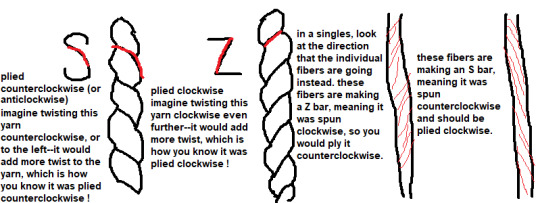
Fig F: S and Z Twist in plied and singles yarn
It’s essentially a mnemonic device that allows you to glance at your yarn and go “Oh! I spun these three singles counterclockwise, so I should ply them all together clockwise.” I often have to draw an S or Z in the air (just like I sometimes have to draw an L in the air to pretend I can reliably tell left from right), but it is pretty foolproof and will prevent you from, for example, trying to ply an S twist singles with a Z twist singles and then wondering what on earth went wrong.
By the way, this page has a really helpful chart on what direction you might want to spin in based on what you intend to do with the finished yarn. For example, crocheting (right handed style) with S twisted yarn will remove the twist as you work, but knitting in continental or English style (or crocheting left handed style) with that same yarn will add twist. Most spinners spin their singles to have Z twist and ply them with S twist--but if you’re a crocheter or knit Eastern style this will unply your yarn as you work, and you are encouraged to try reversing things to have better results with your handspun projects. The more you know !
Now, back to your plying. You may be wondering how you’re supposed to know how much ply twist to add, which is a great question, because plyback tests don’t work when you’re actually plying. Those are for when you’re spinning your singles. Instead, I do what I call a “hanging test”. Just hold out a length of plied yarn between your hands and let it hang (not pulling it taut--the yarn should have a nice downturned curve). A balanced yarn--that is, a yarn that has equal and correct amounts of spin and ply twist--will just hang nicely. An underplied (or underspun) yarn will usually also hang nicely, but you will see gaps inbetween the plies. This is no good at all. Gaps won’t just make your yarn look bad, they'll also make it split when you work with it, and will be less durable and more prone to pilling, felting, and eventual disintegration after much use.
On the other end of the spectrum, an overplied yarn (which may have both too much spin and ply twist, or may be underspun and then overplied in an attempt to fix ones mistake--which won’t work, by the way. You need to go back and add more spin twist to your singles) will twist in the middle instead of hanging. If it only twists a tiny bit, you’re fine. But if it twists a lot, there’s problems. Overtwisted 2 ply yarns tend to be aggressively smooth--this is only relevant for 2 ply, since those have a sort of pearled silhouette. If your 2 ply is smooth, then you’ve most certainly overplied it. 3 and 4 ply are always smooth, however, so a smooth profile for one of those is to be expected.

Fig G: Ply twist in 2 ply yarns. Do these yarns have S or Z twist ?
Don’t worry if your first yarns aren’t perfectly spun or plied (really--they won’t be). Every spinner is striving for something different with their yarn. Some are aiming for total technical perfection, some aim for exquisite fineness, some aim for beautiful colorways and for finding the softest and most lovely breed of sheep. Some just want to spin, some just want usable yarn, some just want a pair of socks that last on their feet and find commercial sock yarn to be about as durable as wet paper (that would be me). You certainly don’t have to know what you want to get out of spinning right away, but the point is that every single spinner has their own standards that they hold themself to, and you don’t need to (and shouldn’t !) try to meet others standards. Especially when still learning, but also just all the time and forever.
I’ve Plied My Yarn, Now What ? OR I Just Want Singles, Now What ?
Now your yarn needs to come off the spindle ! But not the way we’ve been taking singles to ply off the spindle--we need to make what’s called a hank. A hank is basically a loop of yarn that’s been tied so that it’s nice and secure. These loops can be pretty big (mine are all 2 yards/1.8 meters) or as small as the distance around your hand--it all comes down to what you wind your yarn onto.
I have already made a tutorial that goes into quite a bit of depth (and has pictures, even), so I’m gonna speed through this part a little bit.
1. Find something to wind your yarn around. A Niddy noddy is the preferred tool for the job here, and will make it much faster to wind and thoughtlessly simple to calculate the yardage/meterage of your yarn (I’ve seen people use yarn swifts as well, and they certainly look very speedy), but they are by no means required. Substitutes include: a large hardcover book, the back of one or two chairs, your hand (ideal for very small amounts of yarn), your forearm (for smallish amounts of yarn--wrap between the thumb and forefinger and go down to the elbow, then back up), or anything else that won’t deform with pressure and is holding relatively still.
2. Wind your yarn around that thing. You may need to start with a slipknot to attach it to whatever it is you’re winding on, or else a piece of tape. If you’re using your forearm or hand, you can simply pinch the end to hold it in place. Unlike when winding your yarn onto your spindle, when winding your yarn into a hank, you want to use as little tension as possible so that you can get a more accurate measurement of length later on. Also try to keep your winding tidy--in an ideal world, the yarn should be traveling almost the same path every time, not a few inches to the left one time, then wildly skewed to the right the next time.
3. Tie off your hank. Once you’ve finished winding, you need to secure your hank so that it doesn’t tangle. You can use either scrap yarn or else the ends of the yarn you just made (I prefer the latter, since the ends tend not to be very good anyway, so at least they don’t go to waste. In this case, snap off or cut both ends--the length you should cut depends on how thick your hank is). Find where both ends are--you will need to tie knots near the ends so that you can attach the ends to them. Tie an overhand knot a few inches/5cm below the first end, and then hold that end alongside one of your strands of knot-tying yarn, and tie another overhand knot. Repeat this with the other end. Make sure you haven’t overlooked any strands of yarn and left them out of the tie--that’s a very easy way to get tangles.
4. Remove your hank. Gently push your hank off of whatever you wound it on. Put it to the side--now we want to measure. Use soft measuring tape (or a piece of inelastic string or yarn, if you don’t have one--you will then need to measure that against a rigid measuring tape) to span the entire path that your yarn traveled. Write down that number, and now count the number of strands in your hank. Multiply the two numbers together. Now convert your inches or centimeters into yards or meters, and you have your yardage or meterage !
Ex: You wrapped your yarn around your palm, which measures 10 inches. There are 41 strands. 10x41=410. 410 inches is roughly 11 yards. Or: You wrapped your yarn around a small book, which measured 21 cm. There are 50 strands. 21x50=1050. 1050 cm is of course 10.5 meters.
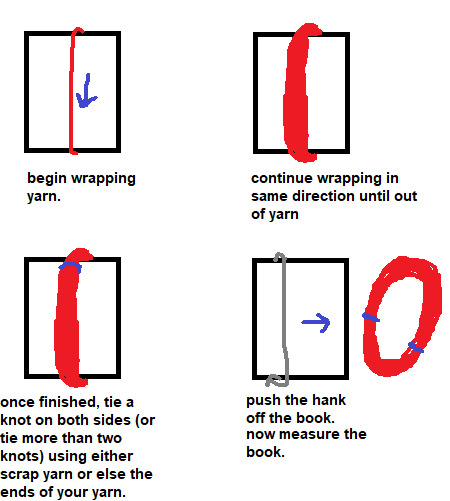
Fig H: Winding a hank on a hardcover book.
It can be very helpful to label your handspun yarn. The yardage/meterage is critical information when it comes to using patterns, less so if you don’t use patterns. But there’s other info that you might still find handy to know later on, such as what the fiber is, where and when you got it, when you spun it, how you plied it, any info on the dye job, what the yarn weight is, what spindle you spun it on, whether it is part of a set, how much it weighs, etc.
Some of my really verbose labels might look like this:
Avocado dye and copper mordant hand dyed in the fleece 2020
Cormo
Bought 2019
Spun for 2020 TDF
2 plied on wheel
210 yards
3.4 oz
light worsted weight
But most of my labels just have the yardage and breed, if I label them at all. I tend to document things online and also remember spinning my yarn better than I remember anything else going on in my life, so I’m a little lazy about labeling. Your labels should include the information that you think you’ll find helpful in the future, or that you know you won’t have another way to recover if you end up forgetting.
Blocking your yarn
Don’t attach that label just yet--we aren’t totally done with our yarn. It has one or two more steps before it’s ready to be used, and that first step is called blocking. There’s a few ways to block yarn--wet blocking, steam blocking, and resting.
Wet blocking: Get your hank of yarn wet, using anything other than very hot water (this could start felting your yarn). You could run it under the tap for a minute or else let it sit in a bowl of water with a little hair conditioner for about half an hour, if you wanted your yarn to be a little softer, then rinse the yarn. Squeeze as much water out as you can, then hang it to dry. You can (and should) also snap or thwack it--but I've gone into detail on that in a link below.
Steam blocking: Get a source of steam going--like a pot of water simmering or a very hot tap running. Using tongs or a long wooden spoon, hold your yarn over the steam and slowly rotate it until the whole skein has been steamed. Don’t let the yarn touch the water.
Resting: If neither option above is possible, you can also just let your yarn sit for at least a week. This lets the twist settle down, so it’ll be a lot easier to work with. However, it doesn’t do anything else that blocking does, so it won’t really show you your “finished” yarn, and may lead to problems down the road.
So--why did we just do that stuff ? Well, we blocked our yarn to reset the fibers, basically. During the spinning, we put the fibers under tension, and they more or less stay in that slightly stretched state. But it’s not really stable--the next time they get wet, they’ll spring back into the natural crimp that the wool wants to have (this changes drastically depending on breed and even individual sheep), and will often puff up. The hank might lose a little length and your yarn’s weight (not as in ounces or grams, but as in lace, dk, or bulky weight) often increases some. So if you’ve made your yarn into something before blocking it, with the perfect gauge and nice drape, the first time you wash it you’ll find that it’s thicker and a little smaller and has less drape. It might not fit anymore, or the seams might be messed up.
This is all entirely avoidable if you just block it before you do anything with it, so I highly recommend that you do.
The other thing that blocking does is set the twist, so your yarn won’t kink up as you work with it--even a perfect, balanced yarn can kink up as you work if the twist is live--which makes it a lot more pleasant. Resting sets the twist as well, as mentioned above.
I’ve gone into blocking in more detail in this post here, if you’d like to know more--I’d especially recommend reading the last section about snapping and thwacking your yarn.
Once it’s fully dry (and remember--wool can hold a lot of water and still feel dry, so give it a little extra drying time just to be sure) it only needs to be wound into a ball before you can use it ! Congratulations on your handspun yarn--that’s a real achievement.
Storing your yarn
If you don’t plan on using it right away, you may want to skein your hanks up to keep them compact and tidy. To do this, put your thumbs on the inside of your hank, and pull it taut. Then, one thumb at a time, twist in the opposite direction that you plied in. Your hank should start to kind of look like rope. Once it has a lot of twist (enough that you’re struggling to add more), find the center point of the hank, and fold it. With 2 yard hanks I tend to fold it over my knee, but a doorknob or something else would work just as well. It should immediately look like an oversized piece of yarn--that’s because we just twisted it one direction, and then folded it in two and let the excess twist twist it in the other direction, which is the same way you ply yarn ! There should be a loop at each end where your thumb was--take your thumbs out and put one loop through the other. Now you can attach your label and you’re good to go !
If it’s a very small hank (one that’s been wound around the palm, especially) you’ll probably just want to wind it into a ball instead. You could do this with any length of yarn--it’s not an ideal way to store wool yarn ultra long term, since staying wound into a ball can stretch out the fibers again, which means you’d need to wind it into a hank and re-block it if you wanted to make an accurate gauge swatch or something. Short term (a year or less) it’s just fine.
If you’re wondering how to wind up a big hank into a ball without tangling, just sit down with your knees up, and put your knees inside the hank, then move your knees apart until the hank is taut. Now you can wind in relative peace, free from tangles. You can also use a yarn swift, if you’ve got one.
I would recommend, by the way, using up some of your first skeins as soon as possible (you might want to keep your very first skein so that later you can see how far you’ve come--I really wish I kept mine). You won’t know how your spinning is until you’ve used it, so to prevent you from getting to skein #40 thinking you’ve been doing great, only to discover that your yarn is actually unusable... use your early yarn ! Evaluate it, make judgements, and learn from it. Does it need more twist ? Is it very lumpy ? Are there lots of spots where it went thin ? Do you like how the colors turned out with the plying method you chose ? These are all good questions to ask yourself as you use your yarn.
Moving On From Park and Draft
Once you’re comfortable with the park and draft method, you might want to try moving on to true suspended spinning. As I said earlier--it may not be for you, and that’s fine, but you won’t know if you don’t try. True suspended is quite a bit faster than park and draft, so if you want to speed up a little, you should give it a shot.
In park and draft, you first add twist, then park the spindle to draft your fibers into yarn. In true suspended spinning, you set the spindle going and draft while the twist is being added. This eliminates the whole ‘standing/sitting there with your arm outstretched, waiting for your yarn to accumulate twist’ section.
The easiest way to get into true suspended spinning is to work your way up to it--try drafting just a little bit while your spindle is building up twist during park and draft. To give yourself more time, set the spindle spinning slower. Then try drafting a bit more. The goal is to draft at the same rate that twist is added, meaning that you can wind on pretty much as soon as the yarn is too long to keep spinning.
The trick here is to adjust the speed at which your spindle spins rather than the speed at which you draft. You can only draft so fast before your technique gets sloppy, and past that you’ll be focused far more on keeping pace with the twist being added than on drafting evenly.
So if I find that I spun my spindle too aggressively, I still it immediately and try again, but slower this time.
I answered an ask about this a while ago where I went into a little bit more depth, if you’re interested.
And if you haven’t seen it, the pinned post on my blog is a lot of stuff like that all collected into one post for easier perusal. Some of them I’ve already linked to earlier in this post, but others I haven’t.
Small Projects, Scrap Projects, and Big Projects: Tips for All
You may be wondering, What the hell am I supposed to do with this yarn ? This isn’t even enough for a pair of fingerless gloves !
Which is a fair concern--endlessly accumulating small skeins of yarn can be frustrating if you don’t know how to use them up.
Drop spindles are limited in how much yarn you can make on them, and while you can make huge skeins by joining smaller skeins together, they may not all be the same weight ! Or they may not match. Or it may just be really boring.
You may also be doing a lot of experimenting, and ending up with 30 yard/meter skeins that you can’t even make something tiny with.
Small Skeins: For single skeins that are too small for gloves, hats, etc, you may still be able to make things like pouches (for yarn, crochet hooks, dice, coins, etc), baby socks or hats, coasters, or other small items. My spinning wheel oil holder is a little basket crocheted out of some handspun, and I have a mini tape measurer on my keys with a cover crocheted over it from handspun as well. You might have to invent things to do with your handspun, but using items that you made enriches your life--I promise.
Scrap Projects: What about tiny skeins ? Or maybe you’ve already made all the coasters and baby socks and spinning oil holders that you could possibly need, and now the small skeins are piling up again. I humbly submit the Scrap Yarn Project--my favorite type of project by far. I’ve been slowly working on a handspun scrap blanket for about 2.5 years, using tiny scraps, small skeins, and leftovers from projects alike. I knit 5x5 inch stockinette squares (some have colorwork, some have different stitch patterns, but mostly I let the yarn be the star) and for the most part just try make squares that are thick enough to stay warm but thin enough to have a little drape. It’s an incredibly satisfying project.
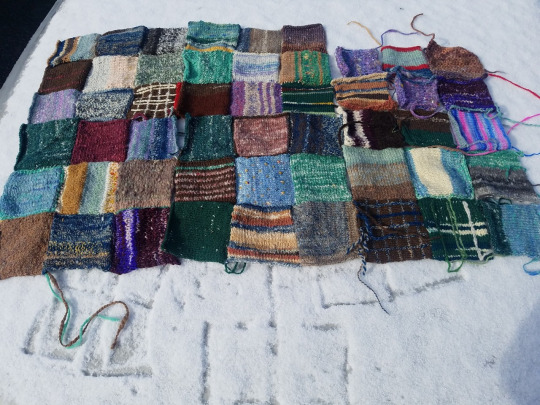
Fig I: An older image of the author’s handspun scrap blanket in progress. The yarns used range from fingering weight to super bulky, and are spun in all sorts of different ways. But it still feels very cohesive.
I like the square approach (and of course if you wanted to crochet granny squares, that would work perfectly too) because it’s modular, so you can decide halfway through that you don’t want a sweater, you want a bag--and then just sew the squares into a bag, instead. But it doesn’t need to be squares by any means--you could also make scrap yarn sweaters, hats, socks, scarves, etc., that are constructed normally.
The only thing to look out for is yarn weight--in some cases, you might want the weights to all be very similar. Socks, for instance, won’t do well if you have parts that are bulky weight and parts that are light fingering weight. You could hold yarns together to get similar weights if necessary, or just only add to the project when you’ve got another scrap skein of worsted weight or whatever. For squares you can use any weight of yarn if you want, but you should change your hook or needle size to get a fabric that’s a similar density, so your stitch count will change from square to square.
Big Projects: These can be difficult even for experienced spinners, because consistency is key to ending up with an even fabric. Not from armspan of yarn to armspan, but from skein to skein--if the weight changes, things can suddenly get much more complicated while you try to correct for the skeins that are too thick or too thin.
One way to try and mitigate that is to not ply anything until you’ve finished spinning all the singles--that is, if you need 10 skeins of 2 ply, spin 20 spindles worth, then go through and pair off your stored singles, thin with thick and average with average. It can definitely be more tedious to do it this way, but if you’re worried about consistency, it might be a good idea.
It also might not be necessary. Try to let your mind stretch back over the whole course of human history--as a species, we’ve been spinning yarns for pretty much all of it, and until very recently, what you spun was what clothed you. If the skeins you spun for your new cloak were all different weights, well... you probably either repurposed those skeins (IF you could, and that’s a pretty sketchy IF) or you shrugged, wore a lumpy cloak, and got on with life. Perfection isn’t everything, my friend. Either way, do what’s going to make you happy. For me, I’d be just fine with a lumpy cloak.
Out Of The Basics: A Few Further Pushes Into The World of Spinning
There’s many, many techniques out there, and an infinite variety of yarns to be spun. Some require tools, some don’t. Some are very advanced, and some quite simple. There are many other tools to spin on besides drop spindles. There’s also processes related to spinning--such as dyeing, fiber prepping, and wool washing--which can greatly enhance your spinning enjoyment and variety. I can’t teach them to you today, but I can certainly tell you about them so that you can look into them yourself !
Changing Up Your Fiber or Techniques to Get Different Effects
We touched on this earlier in the section about the number of plies--a 2 ply yarn will knit up into a bumpy, slightly irregular fabric, and a 3 or 4 ply will be very regular and neat. But that’s not the extent of what you can do to change your yarn up (without buying anything new). I’m going to throw some terms around now--you’ll need to google them, because this is already absurdly long.
For one thing, if you have roving, you can try splitting it lengthwise and fractal plying your yarn for a very beautiful self-striping but marled effect. You can also try spinning it from the fold on multicolored roving, which keeps the colors separate instead of muddied, which can happen otherwise.
With any fiber, you can always mix and match, or add pops of color ! If you’re spinning a bunch of gray rolags, for instance, you can occasionally detach the rolag, spin a tiny bit of blue roving, reattach the rolag, and go back to spinning. Depending on how you ply it, this could produce almost specks of blue or else slips and streaks.
Speaking of plying, the way you make a 2 ply can really change the colorway of the yarn if your fiber is a gradient or multicolored. Say you’ve got roving that’s a gradient from white to purple--if you do a plying bracelet, your yarn will be part barberpole, part gradient: a purple ply with a white ply at one end, and then gradually transition to the midpoint of lavender-pink in the middle, with both plies the same color. But if you plied it the other way, by wrapping your singles onto storage rocks and then plying from those, you’d get a yarn that’s got one pink ply and one white ply at one end, and one pink ply and purple ply at the other.
Chained 3 ply versus traditional 3 ply will make a huge difference as well. If your fiber has stripes, chain plying it will preserve them perfectly (as long as you’re careful to start a loop at the color change--or if you wanted it to fade in a little, you could start partway through a color change), whereas a traditional 3 ply will always marl them, no matter how careful you are about evenly splitting your fiber into 3 sections.
If you like really colorful and bright yarns, you might enjoy cabled 4 ply (where you ply two 2 plied yarns together). If your starting 2 plies are already colorful, you’ll get super colorful yarn with a cabled 4 ply--to me it always looks like dashed lines in different colors.
A laid 4 ply can also make some interesting color combinations, and is perhaps the ideal candidate for mixing random singles together, since it has 3 other plies each singles can hopefully be tempered by. And a yarn that has 3 plies of one color and 1 ply of another color can be interesting indeed !
It’s not just color that you makes an exciting new yarn, though--you can also try making boucle, or thread plying or autowrapping, or spinning beehives, spinning beads into your yarn, spinning thick and thin yarn... the possibilities are almost endless. I’d highly recommend giving “The Spinner’s Book of Yarn Designs” by Sarah Anderson a read if you can--she discusses all of these and many more, and shows how to do them. Other good books that’ll show you how to make lots of different kinds of yarn, or how to tailor your yarn to your needs, are: “Yarnitecture”, by Jillian Moreno, “Spin Art” by Jacey Boggs, and “Yarn Spinning With A Modern Twist”, by Vanessa Kroening. Your library may well have copies, and if not you could likely request they buy it.
You Don’t Have to Drop Your Spindles
...Because there’s other kinds of spindles ! And things that aren’t spindles, but on which you can also spin !
There are Turkish Spindles, which are functionally almost identical to drop spindles (and you can drop them, to be fair), but you wrap your yarn around two detachable interlocked arms that also function as the whorl. When you remove the arms and spindle shaft from the turtle (not cone) of singles, you can then 2 ply with it immediately using both ends. Turkish spindles are great if you love 2 ply and hate winding.
There are Supported Spindles, which come in many forms but are essentially fancy sticks with pointy tips that you spin in bowls. These have more winding than drop spindles because you spin in very short lengths at a time and wind onto a temporary cop that’s just below the tip (it’s much faster than if you wound all the way down to the cop near the bottom). However, you use them while sitting or even (with a bit of wrangling) laying down, and your arms stay in a comfortable, much more relaxed position while spinning. It also spins, as a default, finer yarn than your average drop spindle (I can achieve a very fine and consistent laceweight on any supported spindle, but have only managed that on my tiniest and lightest drop spindle). And they are very fast tools--with proficiency, they can be much faster than drop spindles. Supported spindles are great if you find drop spindles painful, if you have low energy, if you’re mobility impaired, or if you want to spin finer yarn.
There are Spinning Wheels, which come in many shapes and sizes but are the fastest way to make yarn by hand. There are a few objects which could fall under the umbrella of a spinning wheel (namely Walking Wheels, Charkah Wheels, and Electric Wheels) which do not have treadles, but the majority of spinning wheels are powered by foot treadles and can spin faster than you can spin a drop spindle. They also remove winding from your list of duties (for the most part), since the flyer will wrap your newly spun yarn onto the bobbin as you go. New spinning wheels can be prohibitively expensive, but you can also find used ones for ludicrously cheap on craigslist, at estate or garage sales, at antique shops, or other places where old items might be sold. (You can also often find them at affordable but not cheap prices at fiber festivals). Be sure to research the parts of a spinning wheel before you try to buy a used one from a non-spinner--there are many SWSO’s (Spinning Wheel Shaped Objects) out there that will fool you. Spinning wheels are great if you want to make larger amounts of yarn, or want to make yarn faster.
There are Electric Wheels, which are small machines that will add twist and wind the yarn onto the bobbin for you, so all you have to do is draft. New low end models are much cheaper than new spinning wheels, and they take up far less space. They also remove the element of treadling, so if you are intrigued by spinning wheels but have weak legs in any capacity, these can save you a lot of pain. I have a spinning wheel and can’t spin on it much anymore, because my knees and hips dislocate almost immediately. I switched to supported spinning primarily, but an electric wheel would be a good substitute as well. Electric wheels are great if you want to make more yarn faster, but can’t afford a spinning wheel or don’t have the space for them. They are also one of the more accessible tools for those with severe mobility impairments.
And there’s still more, although I can’t do a pitch for all of them xD. There’s Tahkli Spindles for spinning cotton, Navajo Spindles that are long thigh-spinning tools, Medieval Spindles that are easy to whittle replacements for if you break your spindle a lot, and even more beyond that. Many cultures have their own traditional spinning tool, each with their own techniques and strengths, and if drop spindles aren’t doing it for you but you still want to spin, I implore you to check out other kinds of spindles !
From Sheep To Sweater (Washing and Processing A Raw Fleece)
Most people learn to spin from roving (even if it might not be a very good beginner’s preparation), although there’s also rolags, batts, top (both commercial and hand combed), sliver, and cloud. But what if you could start with a raw fleece (unwashed, with vegetable matter and lanolin and who knows what else) and make things out of that ?
There’s some immediate advantages to starting with a raw fleece (even over a washed fleece). For one, raw fleeces tend to sell very cheap. This will depend on where you live, but the vast majority of fiber that I buy these days is raw fleece, and I’ve never spent less on fiber. At a fiber festival, I once paid $10 USD for 2 pounds (slightly under 1 kilo) of raw Shetland fleece. So--they’re cheap. As soon as someone starts putting work into a fleece, like washing it or dyeing it, the price immediately jumps.
Second, if you’re looking for the most bang for your buck, starting from a raw fleece is the way to go. You need to wash it, skirt it (take out the really terrible or gross bits), perhaps sort or grade it if it’s multicolored or there’s clear variation in fiber quality, dye it (if desired--I only dye my white fleeces, as I quite like brown and gray and black), process it into spinnable fiber, spin it, ply it, and then knit/crochet/nalbind/weave/do whatever else your heart desires with it. A single raw fleece can last me a month even if I work on it tirelessly, and I might have paid $20 USD--a little over an hour of wages for me.
It also brings you a lot closer to your work. I can’t say I felt very attached to my fiber when I worked exclusively with roving, but sorting through a pile of hand washed Southdown Babydoll locks while I comb them into top to spin into sock yarn on supported spindles that I whittled myself--I can tell you, I feel pretty damn connected to my work, to the ridiculous little sheep whose wool I have, to my socks, and to the wool itself. It adds a lot of depth, both to the experience, and to my understanding.
It’s also honestly pretty easy. To wash a fleece, you need a dedicated wool pot (as in, don’t cook in it again), a bit of dish soap, and some time. Put the fleece in--don’t crowd it, just work in batches if your pot can’t easily fit all of the fleece--add cold water and a squirt of dish soap, and let it cook on the stove for about 45 minutes, without a lid. Don’t let it boil--ideally it should be steaming but not quite simmering. You can use a dedicated wool spoon/tongs to gently and infrequently stir the wool. The water should get pretty gross. After 45 minutes, start the tap running (you need to rinse the wool in very hot water--if you let temperature shock happen, it could felt), drain the water, and rinse the fleece. Then repeat--filling up the pot with hot water now--until the water stops looking dirty at the end of the 45 minute cooking time. Rinse it one more time, and then let your wool dry, ideally on a clothesline but over a vent/spread out flat on a towel is fine too.
Yes, it really is that easy. If you’re worried about felting or otherwise ruining the entire fleece, you can always start by washing just a handful, so that way if you ruin it there’s not much waste. But I’ve washed at least a couple dozen fleeces that exact way, and I’ve never ruined one.
After washing and drying your fleece, you need to prepare it. I typically prepare enough to spin for a day at a time, but you could also do it all at once if that’s more your style. There’s many ways to prepare wool, and I’ll discuss most of them at least in brief, but we’ll start with teasing. This is where you take a lock in your hands, and tease it open. Let any VM (vegetable matter) fall out or pick it out yourself, and open the lock up to the point that you can no longer see any lock structure. It’s now spinnable, just like that ! This is a pretty slow method, but if you start out your raw fleece journey buying just a few ounces/50ish grams of fleece, it’s perfectly doable to tease it all open by hand.
If you have money to put into the endeavor, a humble pair of hand cards (70 TPI will card most wools), or you can kind of make do with two pet brushes like these (although at that point, spend $10 USD more and you have a pair of hand cards, so idk what the point of that is, unless you already have them) is a very good place to start. Load the fiber onto one card, card it until it’s uniform, roll it into a rolag, and it’s spinnable !
You also have hand combs, which are a lot more expensive than hand cards, but which can process very long fibers and can get out all the vm. Cards don’t remove a lot of vm, so combs is the way to go for super vm-y fleeces. They also produce hand combed top, which spins up into a very compact, strong, and abrasion resistant yarn--great for socks.
Past that are drum carders, which are machines in the way that spinning wheels are machines--manual, but they certainly automate the processing of fiber for you. These can be expensive indeed, but process fiber very quickly and are a great choice if you plan to sell the fiber, if you want to start with raw fleece but haven’t the dexterity to do it by hand (and there are electric drum carders as well--otherwise, you are turning a hand crank), or if you want to process high volumes of fiber because you just go through it that fast.
Honorable mentions include flick carding (both cheaper and slower than hand cards--you work with a couple locks at a time and open them up by flicking them with a tined brush), blending boards (these don’t process raw fiber, but they turn already processed fiber into batts--so you can blend many wools very easily for different textures or colors. These are like painting with wool--so fun !), and willowing (I haven’t tried this one yet, but you lay out your wool and repeatedly hit it with willow branches or other bendy sticks, which opens the fiber and also sends it flying all over the place. It looks very fun, and rather slow, and is also free as long as you can find a willow tree).
This website describes some of those methods (and one I didn’t get to) if you’d like to check it out.
Colors to Dye For
Wool takes dye very readily, and you probably come into contact with several natural dye materials every day--onion skins, avocado pit and peel, daffodils, coffee, black tea, thyme, even grass ! You don’t have to be working with fleece to dye it (although dyeing fleece gives you so much color variation and is very fun)--you can also dye roving very easily. Batts, rolags, and top less easily, although it’s possible with a lot of care.
For most natural dyes, you need to collect quite a lot of it, and then let it cook overnight on low heat. Boiling (sometimes even simmering) can kill the color, so you’ve got to be patient. Crock pots on low or medium are great for this. If you can cook it two days, all the better. Let it sit and cool for at least 12 hours, then strain it. (Tip: you can store natural dyes in jars in cool, dark places for at least a year without any ill effects--so you don’t need to use the dye immediately)
The majority of dyes need something called a mordant (I go into more detail about mordants in this post if you’re interested). There are many mordants, but some easy household ones are alum, baking soda (bicarb), copper (put a few bits of copper pipe in a jug of white wine vinegar, let sit for a few weeks at least before using), or iron (same as copper, but with rusty nails. Use a plastic jug !!! Metal will rust and glass can break). Most people mordant their wool by putting it in their dedicated wool pot with some water, adding the mordant, and letting it cook on low for an hour. Then drain the water and add the dye.
Natural dyes need to cook for a while to set--I usually let them cook overnight at least.
For batts, rolags, and top, you can do something called solar dyeing--carefully mordant your wool as usual, then place it in a jar with the dye, and put the dye outside in the sun. Over time (at least a week--often months, especially if you don’t live somewhere warm and sunny) the heat from the sun will warm the water and dye the wool. You could also try storing the jar somewhere you know will be warm, such as near the stove or fireplace.
You don’t have to use natural dyes either--there are also acid dyes, or food coloring, kool-aid (sugar-free), etc. I’m a lot less familiar with those, so I can’t go on at length. They can be a good choice if you don’t have the time for natural dyes, or if you want to get specific colors and not guess what your wool will turn out as. Look into them if you have any interest !
Dyeing your own wool is immensely satisfying, and can be a very cheap (or free, in the case of many natural dyes if you’ve collected or grown them yourself) way of obtaining more color, if you find that you keep ending up with a lot of white wool.
Endless Breeds of Sheep
There are many breeds of sheep on there (not endless, sorry--although there will always be new breeds being developed, so endless in a way !), and they all have different qualities, both in terms of the sheep themselves, and the wool they produce.
Do you want your wool to be very hard wearing ? Down breeds such as Southdown (one of my absolute favorites), Shropshire, or Dorset can be quite durable, and are resistant to felting. You could also go for stronger, coarser wools such as Jacob or Romney--coarser means stronger with wool, and softer tends to mean weaker.
Do you yearn for a softer wool ? Cormo is fantastically soft, as are Rambouillet, Debouillet, and Merino. Many lambswools (meaning the fleece from a lamb--the older a sheep gets, the coarser its wool tends to be) can be softer than their breed standard, so seeking out lambswools even from breeds like Jacob or Rya (both usually strong wools) can lead to soft fleeces.
Of course, there are more considerations than just soft and hard wearing, but there’s pretty much a breed for everything. If you’re interested, “The Fleece & Fiber Sourcebook” by Carol Ekarius and Deborah Robson is an incredible resource, and covers just about every breed under the sun (with pictures, samples, notes, recommendations, and interesting bits of history), as well as most non-sheep fiber producing animals as well ! Speaking of...
There’s Not Just Wool
There’s also many non-sheep fibers, and plant fibers too !
Animals with easily usable fiber include: alpaca, llama, angora rabbits, goats, camels, musk ox, and more ! Their properties are usually different from wool--all of the fibers from the animals above have little to no crimp in their fiber, meaning that they aren’t elastic like wool is. They’re also varying degrees of warm (cashmere--the undercoat fibers that come from many different breeds of goats--are extremely warm, but still not as warm as musk ox down), and some are unbelievably soft. If you can, I highly recommend getting a little cashmere, a little camel down, or whatever other exotic fiber strikes your fancy. They’re very fun to experiment with, and small amounts can easily be worked into projects to add warmth, drape, or softness.
We can’t forget about silk, either--produced mainly by certain species of silkworms, although most insects undergoing complete metamorphosis produce silk of varying quality as well. Silk is a very interested fiber to spin--but it can also be reeled instead of spun, which is how you can get extremely thin silk pieces without even needing to spin thread-weight yarn.
But in early human history, before we domesticated sheep and bred them to have better wool than they started out with, we spun things like inner tree bark, flax, nettle, and cotton. These all require very different techniques than wool, but most of them can be spun on the same tools (and all but cotton can be hand twisted into cordage instead, if that’s more up your alley). They are also inherently cooling--fabrics made from linen will keep you very cool indeed--so if you live somewhere hot where having wool objects is mostly pointless, don’t despair ! There’s still stuff for you to spin.
Connect With Others !
I’m about done with this monograph, but there’s a few last things I want to share.
First is the existence of Fiber Festivals--you may or may not have some in your area. They’re extremely fun, and you can meet many spinners there. They’re also usually a very cheap source of fiber, as prices are often a lot lower at festivals.
Second is the existence of Spinning Guilds--again, you may or may not have one locally, but if you do, you might want to join ! There are also spinning clubs and groups, which might be a little lower-key and more welcoming to beginners.
Then there’s TDF, or Tour De Fleece. You may have heard of the biking tournament called Tour de France which happens in July--well, every year a lot of us spinners do a tournament ourselves, but it’s generally not competitive (except on Ravelry--there are teams and points and everything). For the most part, participating in TDF just means setting a spinning goal for yourself from July 1st to July 23rd (the end of the race) and then trying to achieve it. For a lot of people, this means spinning every day. Some set goals like “get through this whole fleece I bought 10 years ago” or “spin a sweater’s worth of yarn” or “learn how to spin flax, finally” (that’s what I did last year). Or maybe it is just spinning every day--even if just for 20 minutes. On tumblr you can see other’s work and post your own under the tag #TourDeFleece2023, or #TDF2023 (there’s many variants as well)--we’d love to have you !
Lastly, there’s International Spin In Public Day ! To be honest, nobody can really agree on what day that is--allegedly, it’s the 3rd Saturday of September. (For me, it’s literally every day that I leave my house, but I digress). But I’ve also seen posters for October, for September 10th or earlier, and just generally lots of different dates. I’d say play it safe--if you see someone say it’s International Spin in Public Day, go spin in public just in case :D. The purpose of a day like this is to bring spinning back into public knowledge--let’s face it, most people in the western world have zero clue how yarn is made, and couldn’t differentiate a spindle from a spatula. This sucks ! Spinning is such a great activity--it can be meditative, calming, fun, exciting, or a background motion to other activities that allows you to actually pay attention (if you have ADHD). And I think a lot more people would spin, and would enjoy it, if only they were exposed to the idea. You certainly don’t have to act as Spinning’s public outreach officer, or anything like that... but when people ask what you’re doing, explaining it patiently and encouraging them to look into it does everyone a favor.
In Conclusion
I hope this has been helpful and not too confusing ! It’s really important to note that I’m just one guy--I don’t know everything, and I might not always have the best techniques. Looking for information on spinning from multiple sources is a good way to get a well-rounded understanding, and to correct common misconceptions that you might have already learned. Perhaps more importantly, there’s pretty much an infinite number of ways to do almost every single step I’ve described here, and if the way I showed you--or the video I linked to showed you--isn’t working, don’t despair ! There’s nothing wrong with you, you probably just need to do it a different way. I must have watched 3 dozen videos of people drop spindling before it finally clicked with me.
I hope I’ve opened up the world of spinning to you at least somewhat ! There are many things I didn’t touch on, and lots of stuff I wish I could talk more about, but at the end of the day I mostly wanted to 1) show you how to make yarn and 2) pique your curiosity about the whole rest of it. If you have questions, I’ll try to answer them (Purple, I will of course answer all your questions and also attempt to mind read your questions before you’ve even asked them so that I have a 10 million slide power point done by the time the question is out of your mouth), but check the comments and replies first ! Someone else might have answered it already.
Thanks for reading, and happy spinning !
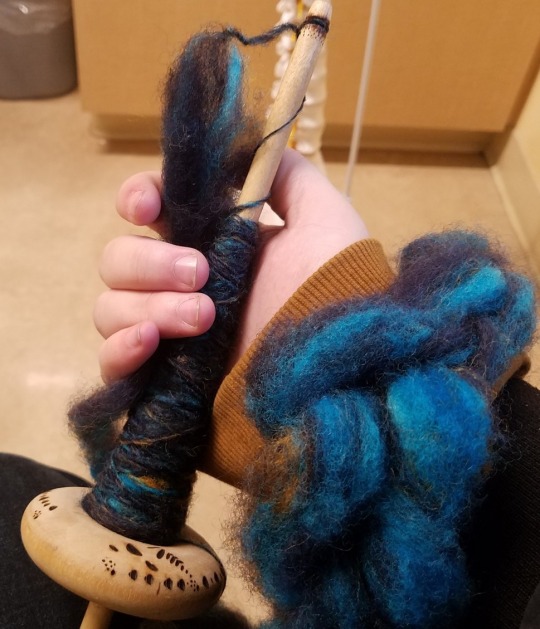
Fig J: The author holding his old drop spindle, spinning at a doctor’s appointment. The spindle now belongs to the friend for which this monstrosity of a tutorial was written ! :D
#spinning#drop spindle#beginner spinning#tutorial#handspinning#handspun yarn#fiber arts#i truly have no idea how to tag this#its over 13k im so sorry#swords i did end up adding tipping to this blog bc of your recommendation thank you !#i cant seem to add tips to posts that i made after tipping was enabled tho. which is very annoying. so its just on all my posts for now#hopefully will fix that later#this did take about a week of writing ! so if anyone#(BESIDES PURPLE FOR SEVERAL OBVIOUS REASONS THIS WAS A GIFT FOR YOU <3)#wants to show some appreciation if it helped you at all#i would be very thankful as i am so goddamn broke lol
2K notes
·
View notes
Photo

wretchedness
#i have no idea how to draw either of them#i've drawn obi wan like 2 times before cause he's just#chef kiss#but anakin is my type of character to draw and i love that bitch of a man#this ship has consumed me since i got back into starwars LMAO#wups!#aniobi#obiani#the fuck is their ship name anyway i know aniobi is a staff move (that my roommate has learned and i kinda did)#and it's so funny that a movement is a ship name LMAO#anakin skywalker#obi-wan kenobi#starwars#obikin#i think i've seen this tag used before#aoniobi shippers please help me out ur my only hope#ooowyn art
1K notes
·
View notes
Text

So does anybody else ever think about how Loop felt the need to demonstrate that the party's deaths wouldn't have any effect on the loops. I know I do but that's besides the point. Anyway I don't think Loop actually needs to bathe, they just like to feel included.
#'but lucabyte didnt you already do a comic with this exact same message? that loop has potentially killed their party intentionally before?'#yes i did absolutely do that thank you for noticing. that is what the cannibalism comic is about. no that was not a metaphor. lol#isat#in stars and time#isat spoilers#in stars and time spoilers#sifloop#isat siffrin#isat loop#in stars and time fanart#isat fanart#lucabyteart#ill ramble elsewhere some other time. maybe in a text post. but. long and short of it: even if you assume the answer to 'how do they know'#is that in sasasap isa got frozen once. theres still the fact that the loops are from sif being too distressed. how far gone does a siffrin#have to be before they can witness a party member die and notice it has no effect. how does loop feel to have planned to kill the party#during act 3. why did they NEED to show sif that. are they trying to preemtively stop them from getting the idea in their head#that maybe that might work? when they're out of all other options? when they just get so frustrated and at wits end?#loop helps in subtle ways through the whole game. and in less subtle ways like begging sif not to use the dagger. and while yes the#overarching reason you need to learn that the loops are tied to sif is because you need to figure out wish craft.... loop doesn't know the#actual mechanics of the loops themselves. just what didn't work. the power of friendship. getting the final hit in. being perfect. etc...#and besides all that.. how did loop feel during that hangout. being so deceitful. especially since before the other shoe drops#sif is enjoying themselves. but they know what's coming the whole time.#as for: why bathing? its the obvious imagery for blood on their hands/washing/never being clean. and is a bit of an inversion of the other#piece i just drew with the other casual closeness and nudity being kind. this one is cruel instead.#anyway tag ramble over ill do a masterpost of all my fanwork with some directors commentary sometime i promise. since i know im often vague
711 notes
·
View notes
Note
But Endeavor, whose only been a perfunctory fucker now eating pussy, your pussy, for the first time and he just does the messiest job of it. Just down there exploring every fold with his fat fingers- hearts in his eyes and juice in his chin
ANON... 🥴🥴🥴 please you are so right all he knows is breeding... (RIP don't look at me) he's gotta learn how to eat someone out sometime...
Endeavor x gn!reader (w vagina)
cw: messy messy oral, fingering (thick fingers...), rough, overstim, reader squirts
pet names: baby
.
"Higher- ah!" Your sharp moan told him that he found the right spot, his tongue flicking your clit. He was clumsy and awkward, like he didn't quite know how to move his mouth now that he'd found your sweet spot. Your fingers slid into his hair as his lips wrapped around your bundle of nerves.
You briefly looked at him, seeing his piercing blue eyes gazing back at you. There was a dusting of pink on his cheeks, uncertainty seeping onto his features. You wanted to tell him how adorable it was, how much you were in love with this version of Enji Todoroki. But you knew better, he wouldn't take that compliment well. He'd get hyper masculine, pin you down before getting rough and pounding his heavy cock into you.
He tried to pull away out of insecurity, but you tugged his hair with just enough force to keep him between your thighs. "Want you right here." You held him in place, seeing his eyes widen slightly and the flush of his cheeks become a deeper red.
The bashful expression lasted less than a moment, his eyes flickering closed as he sucked your clit. When he opened them again, they were full of determination. Enji suddenly pulled your hips closer to the edge of the bed to get a better angle. You felt his thick fingers dance between your folds, throwing your head back as he teased you.
"Enji," you moaned his name, arching your back as a finger pushed into you. Your cunt practically sucked him in, and he groaned as he imagined his throbbing cock getting the same treatment.
There was a glisten of sweat clinging to your skin. Your fingernails dug into his scalp as he sucked your clit hard, flicking at the bud with his tongue as his finger searched your pussy for your g-spot. A second finger pushed into you, your core throbbing for more. You threw your head back, losing control of your body as you could feel pleasure creeping up your spine.
You were so fucking sexy. He needed to taste your cum on his lips. It was all he could think as his fingers pressed your g-spot, instantly pulling lewd sounds from your lips. He smirked, his tongue now only lightly swirling around your clit as he focused on finger-fucking you. You were close, he could tell from the way you tightened around him.
"That's it, baby." He growled into your pussy, "cum for me." With another rough suck on your bundle of nerves, he prodded your g-spot relentlessly. His blue eyes were trained on you, watching every minute change as your breath hitched.
Your cunt tipped over the edge with ecstasy, Enji holding you in place as he continued his ministrations. It quickly spread through your whole body, thighs twitching as you felt yourself getting oversensitive. You mumbled his name, writhing in his grip as you rode out the orgasm.
"Just a lil' more..." He continued, "c'mon baby," his motions intensified, sensitivity instantly sending a more intense wave of pleasure through you. You could feel yourself squirt into his mouth, almost embarrassing had he not immediately started licking the essence from your folds.
He cleaned you out like a starved man, slowly and gently letting you come down from your high. He continued to watch you with adoration in his gaze, his cock throbbing with desire. When he finally pulled away from your cunt, you saw his smirk drenched in your juices.
"How was that?" He spoke quietly, but with confidence. Your expression and the fact that you were still catching your breath told him the answer.
"Not bad for a first timer." You chuckled through heavy breaths.
"Oh?" He climbed on top of you with a grin, pinning your arms above your head. "How 'bout I show you my expertise?"
.
@rottiens if I have to brainrot about this man you do too
#please no one put breeding w endeavor in my inbox i simply won't be able to handle it#endeavor x reader#enji todoroki#x reader#still having sinful nasty thoughts about this old man#i like thinking about a reader with an absolute failquirk. like just one of those stupid as fuck ones#and like Enji wants to breed her so bad but he's got his hangups about having a strong child#so he just hires her as an assistant and lusts after her for years#finally now that he's got kids that are grown enough and competent enough he can't help thinking#what if he breeds her. what if their quirks merge. that kid doesn't have to carry on his legacy. they can have a failquirk#and it's all he can think about whenever he sees her. how much he wants to fuck her into oblivion#until she's carrying the kid whose quirk doesn't matter...#wait fuck. WAIT SHIT I DID THIS TO MYSELF#goddamnit i need to be supervised. i need someone to watch as i type tags and STOP ME#my failquirk? putting all my best ideas in the tags#when my quirk merges with Enji's our child will be able to write detailed and thoughtful tags. but in the plinko horse flame text#he's gonna be so proud
331 notes
·
View notes
Text

someone's gotta be the adult around here
#exoticbutterstxt#i did something#candace flynn#phineas and ferb#i have no idea how to tag candace-2 help me pnf fandom
226 notes
·
View notes